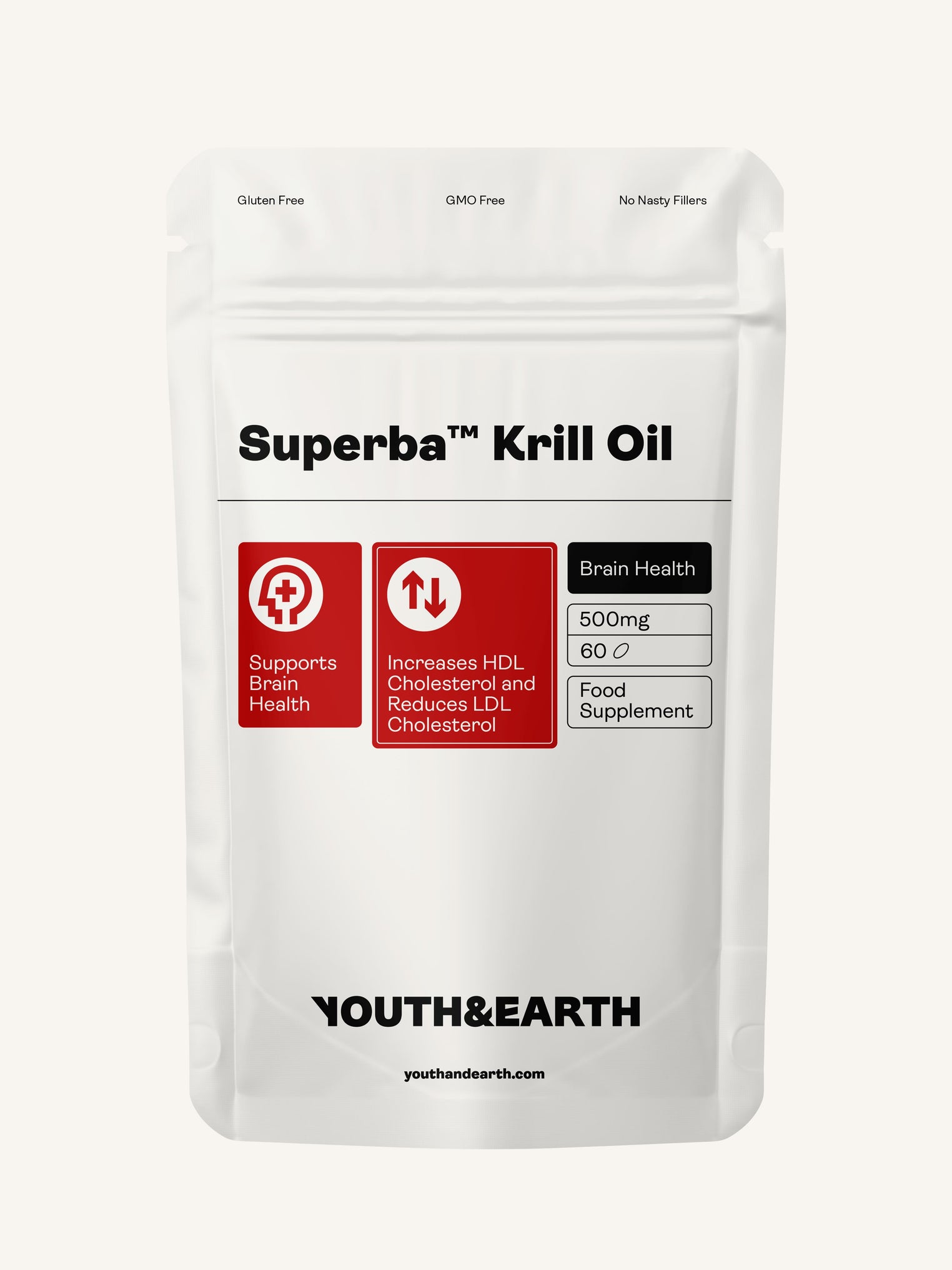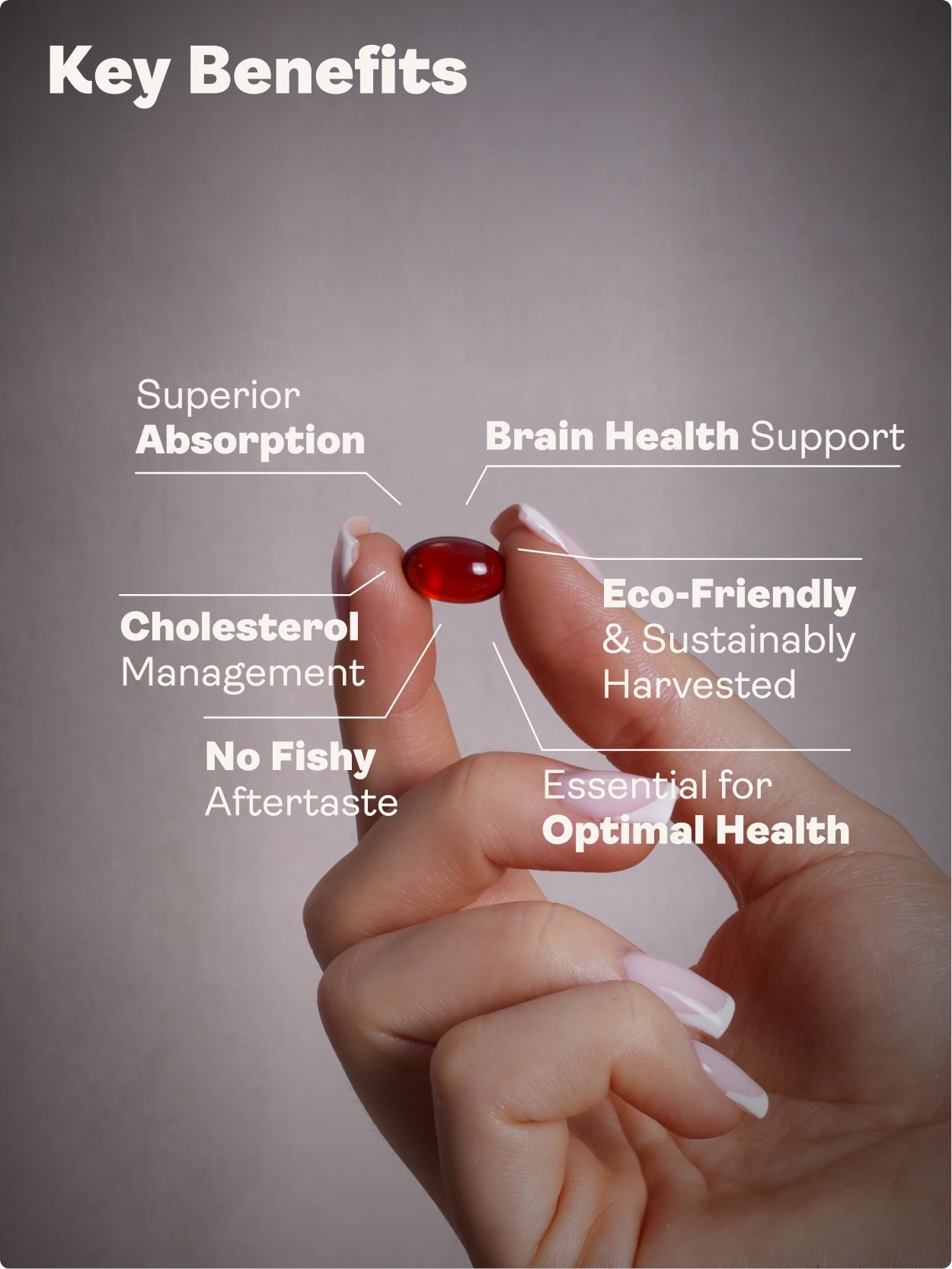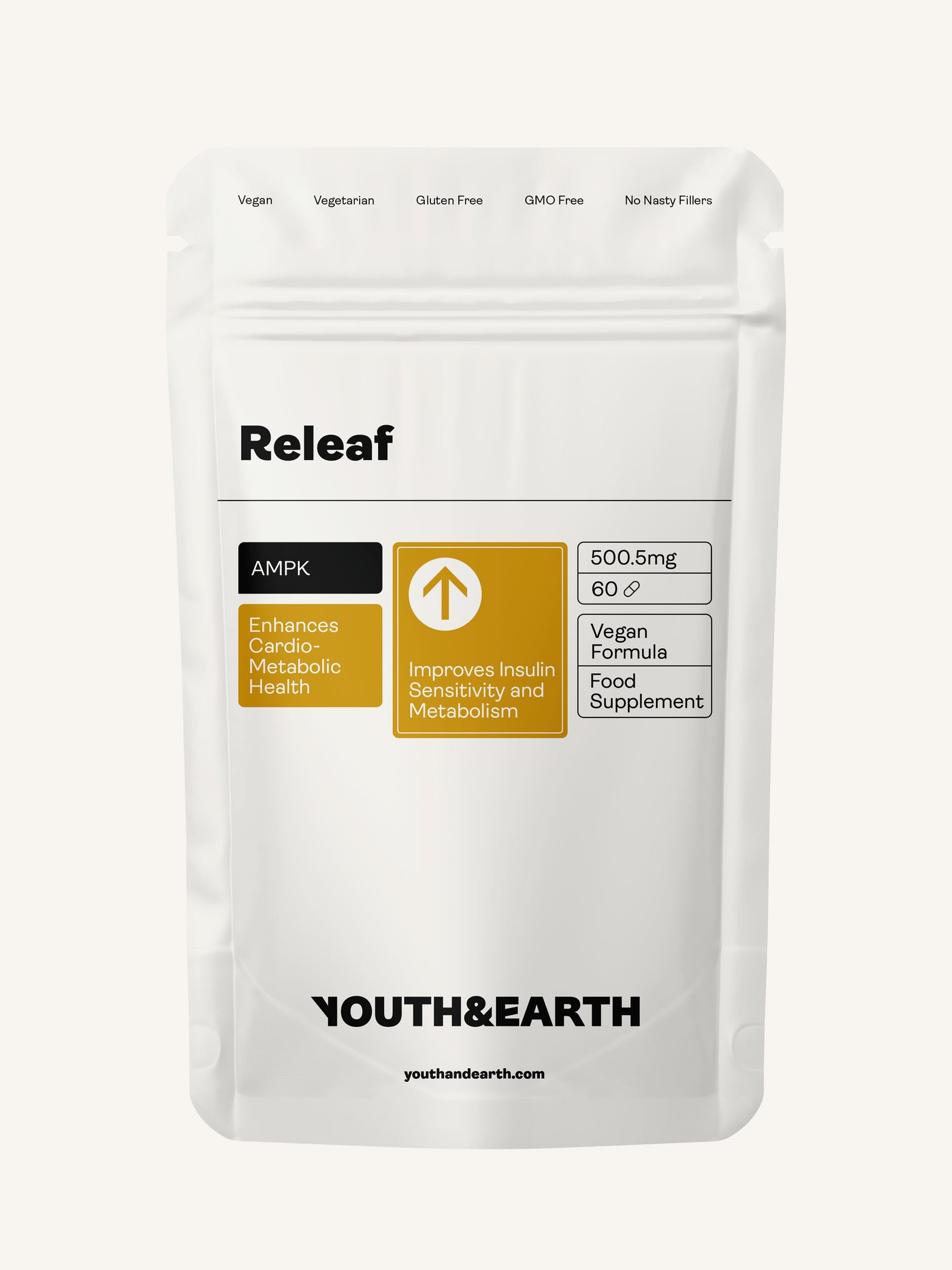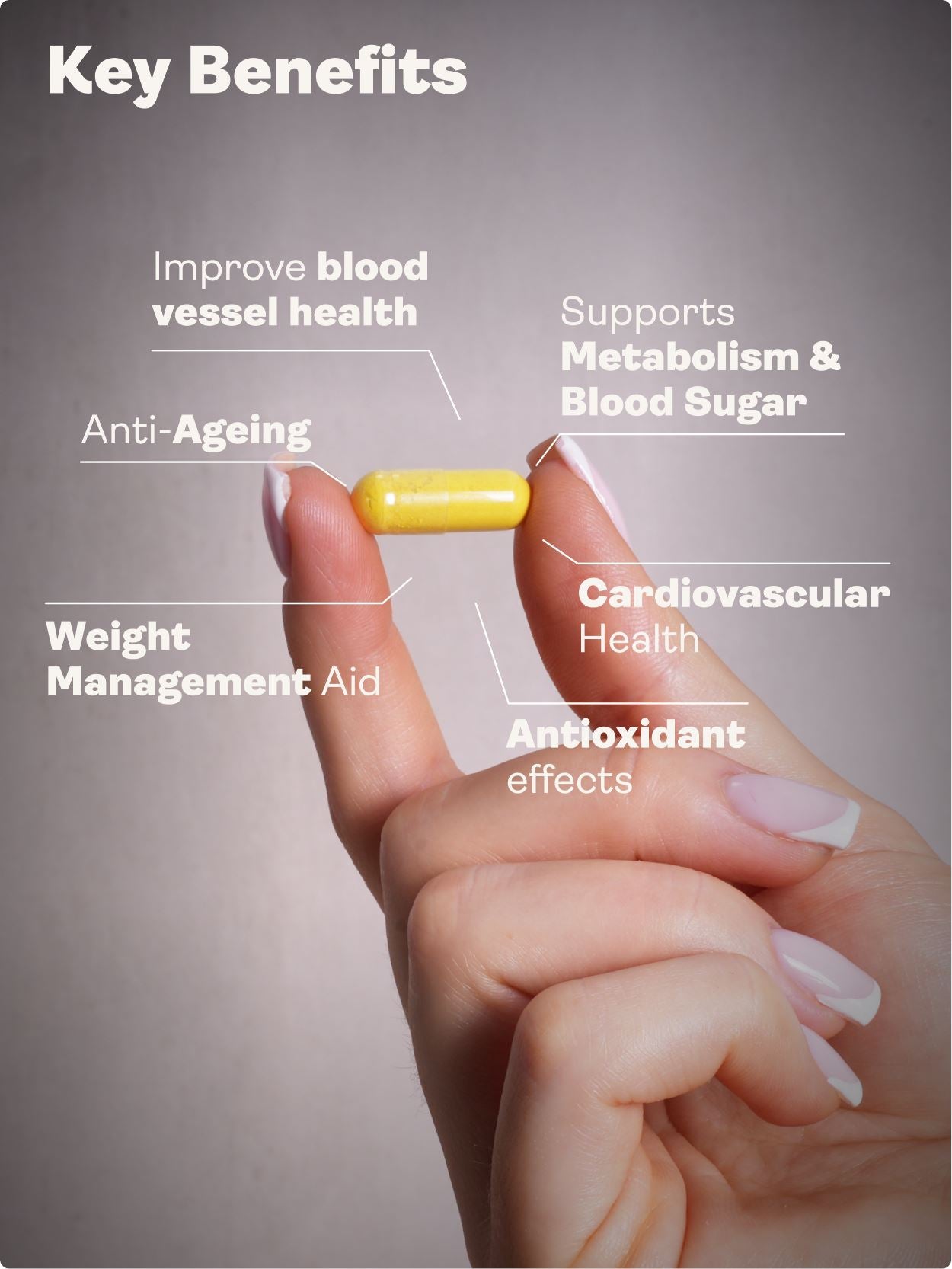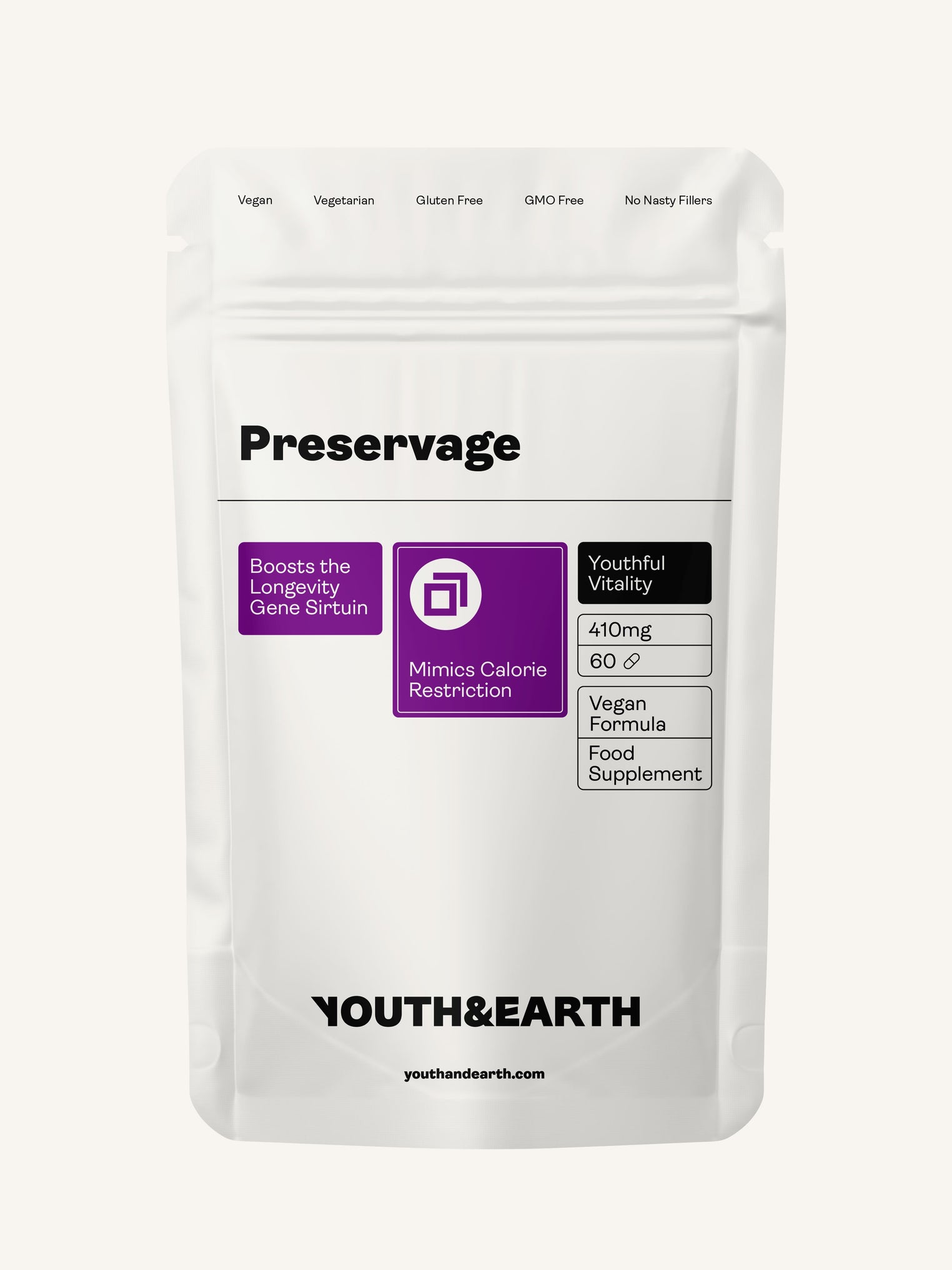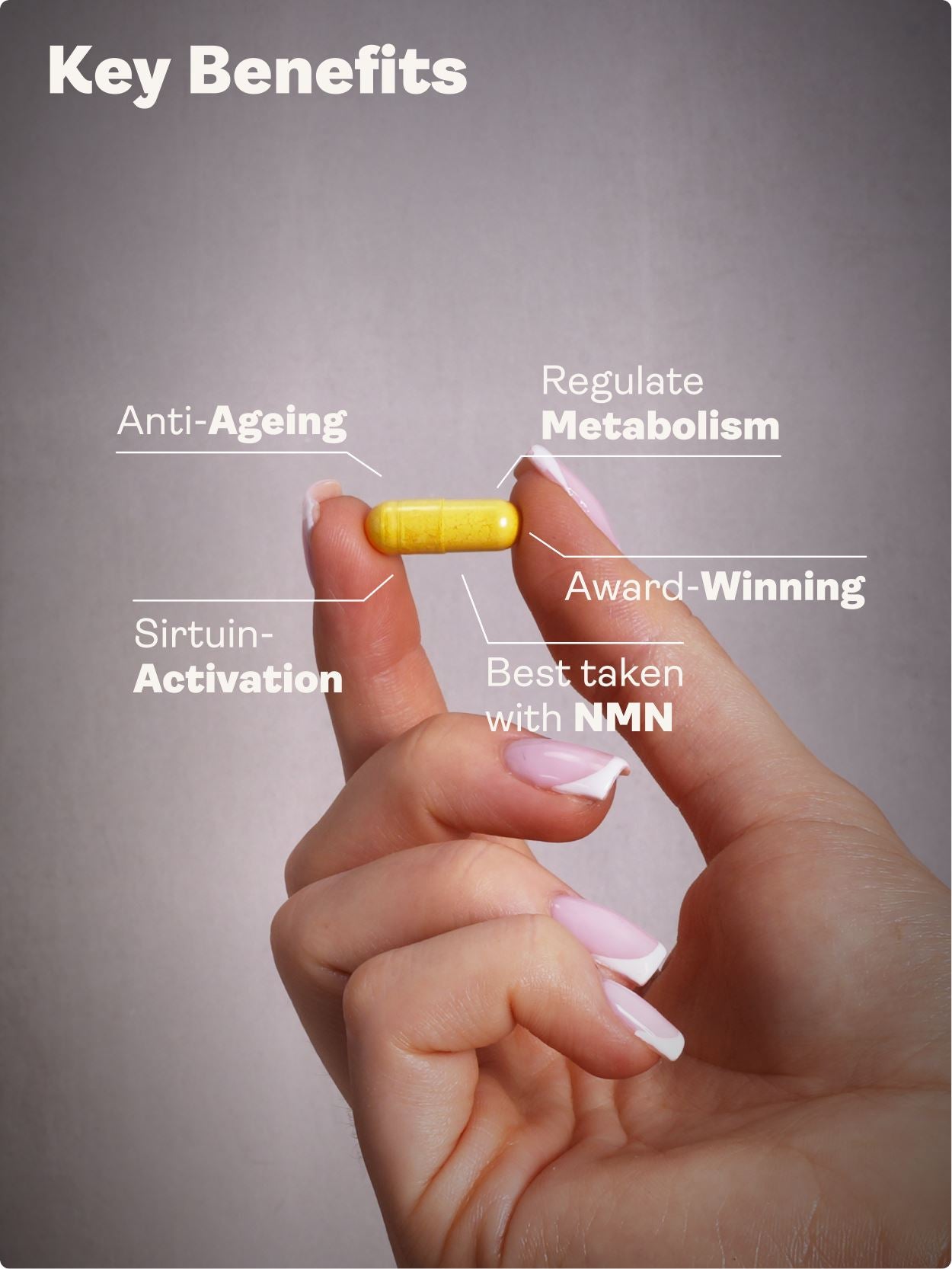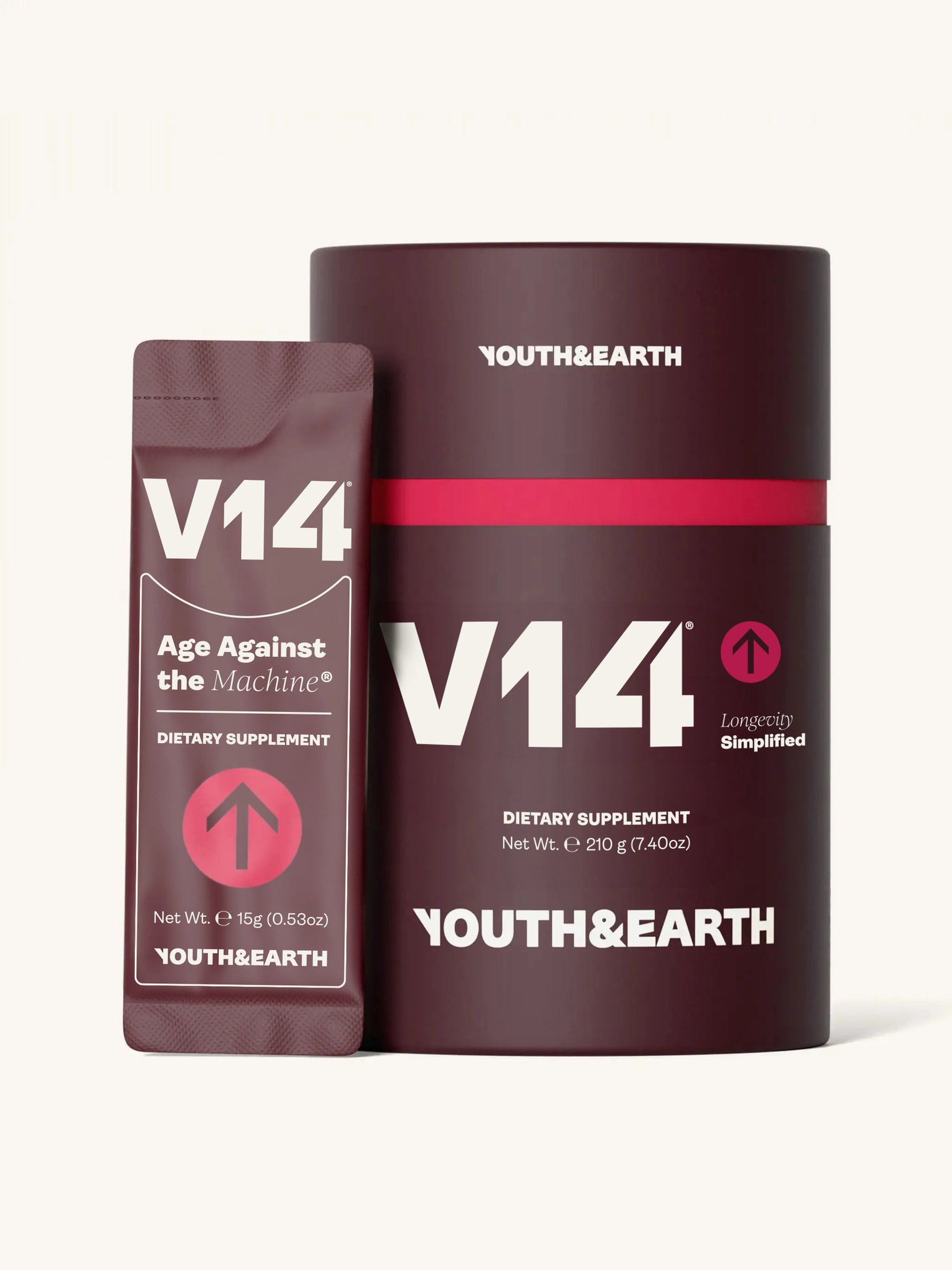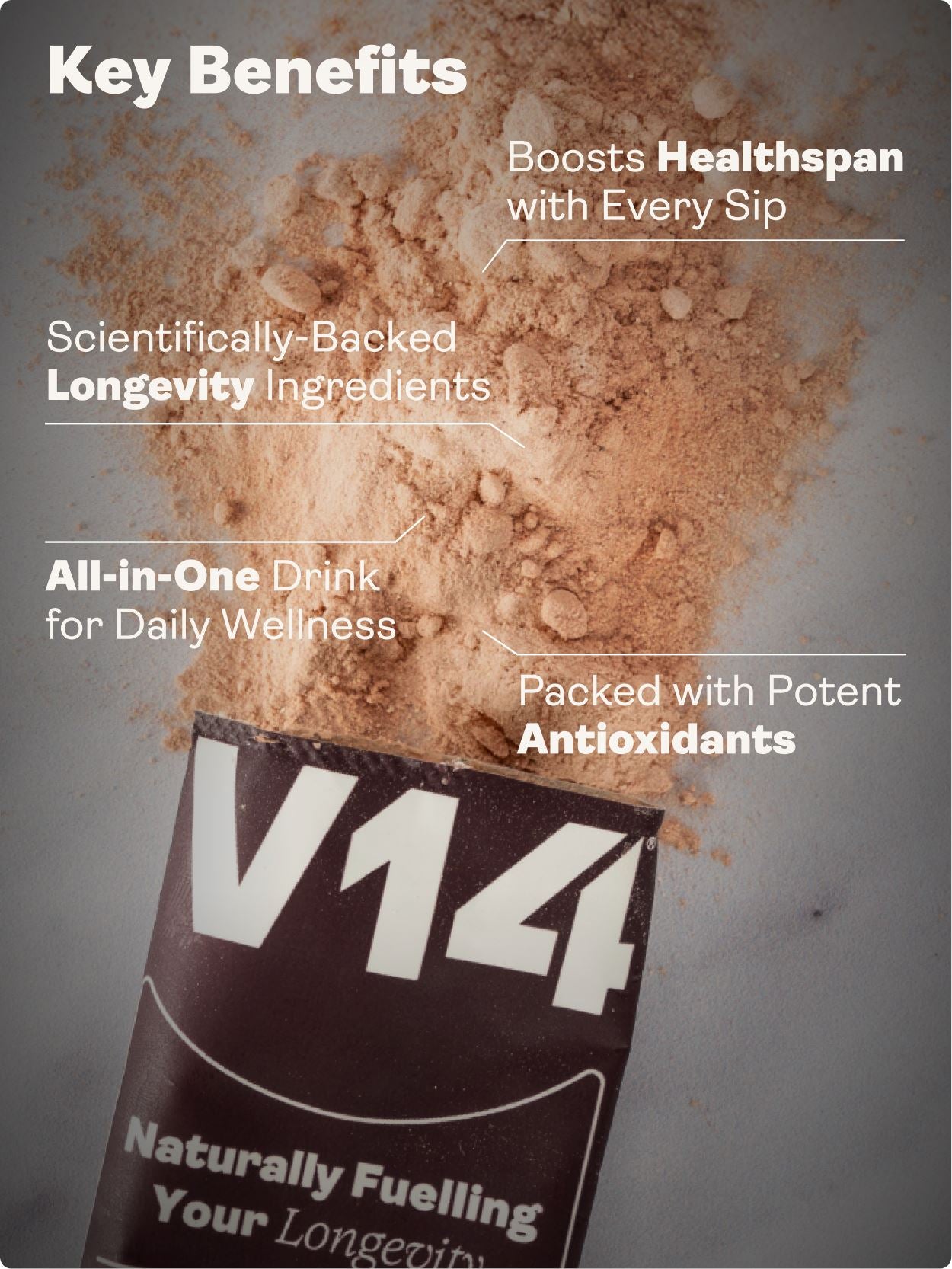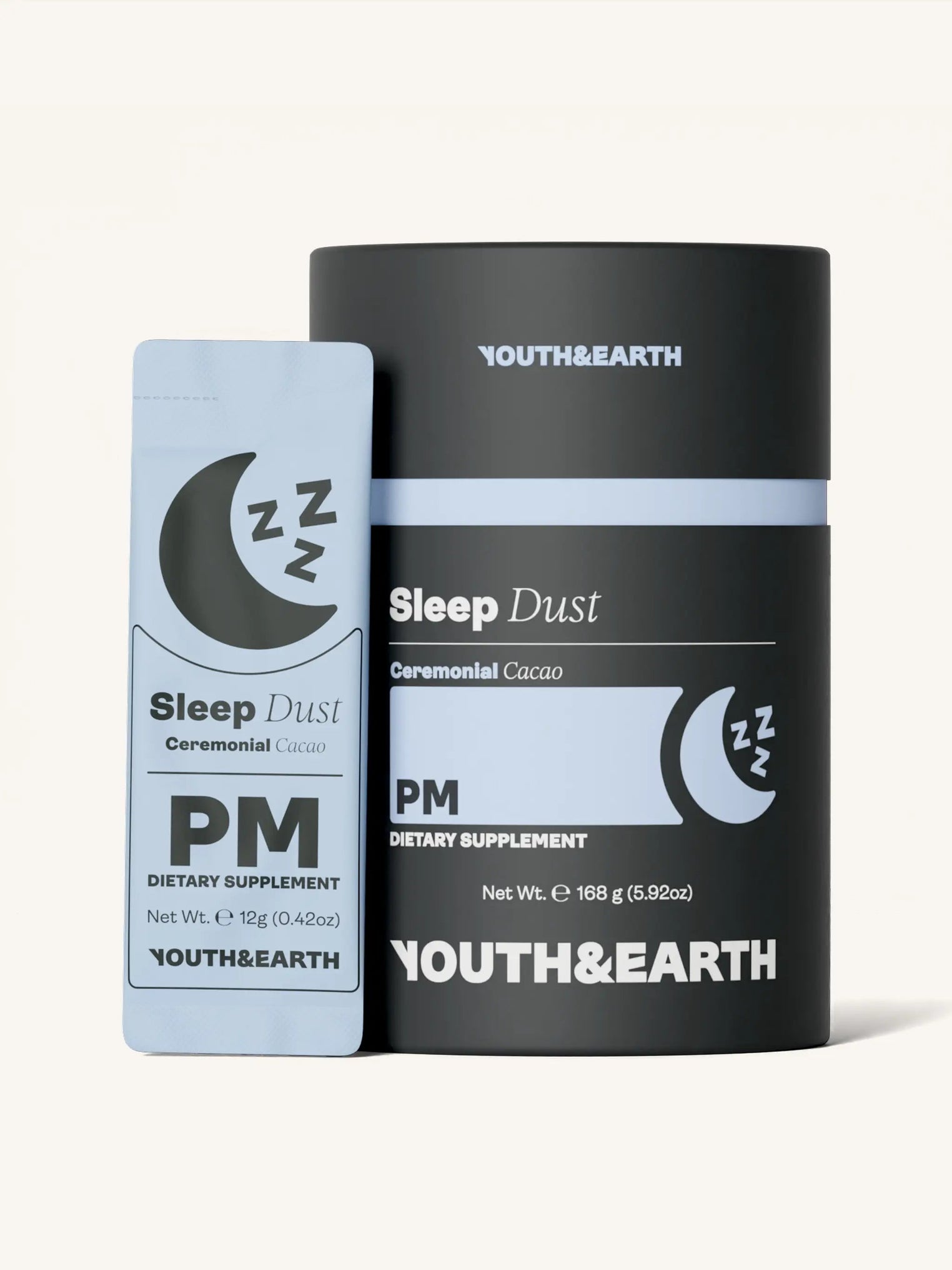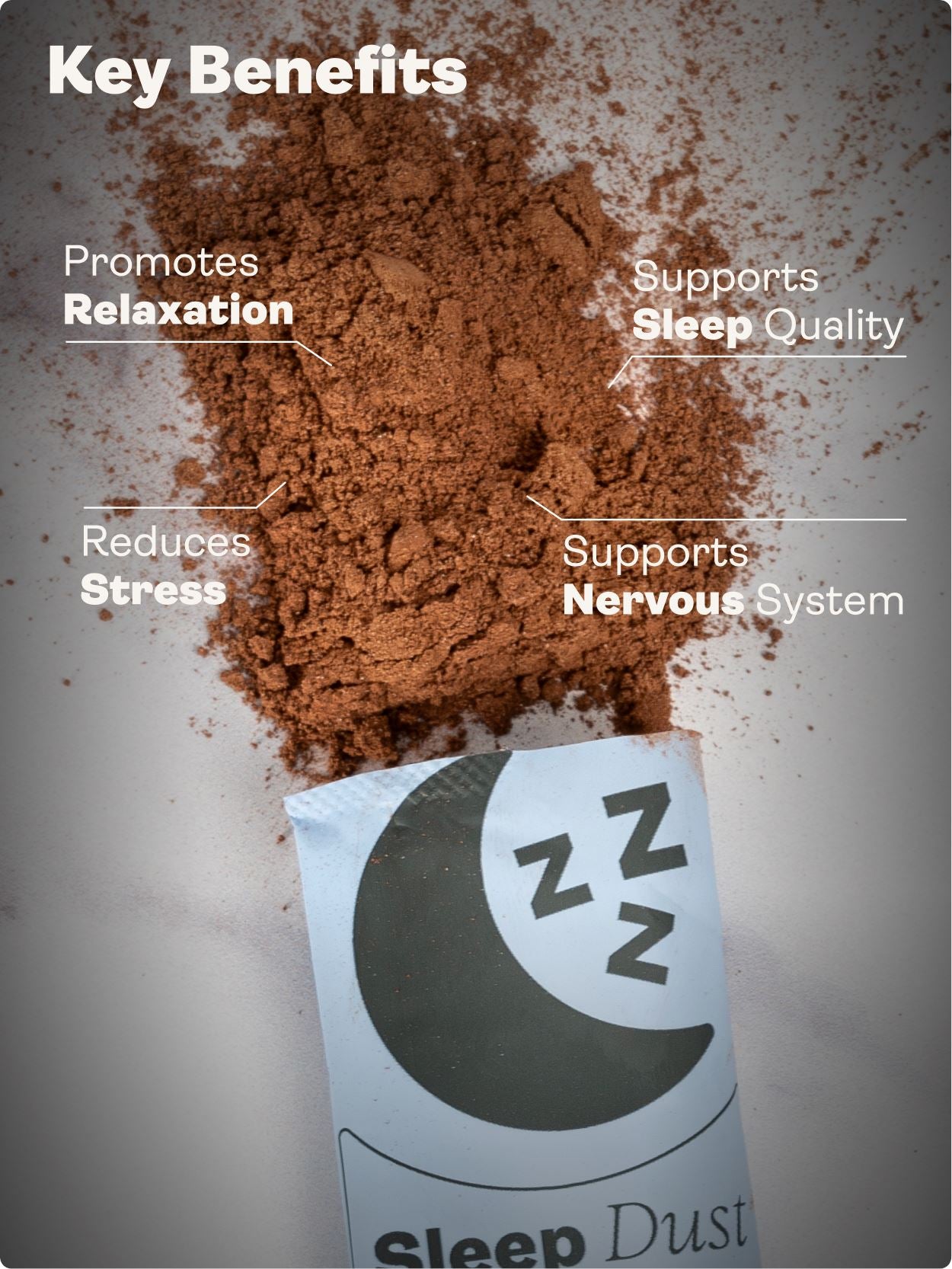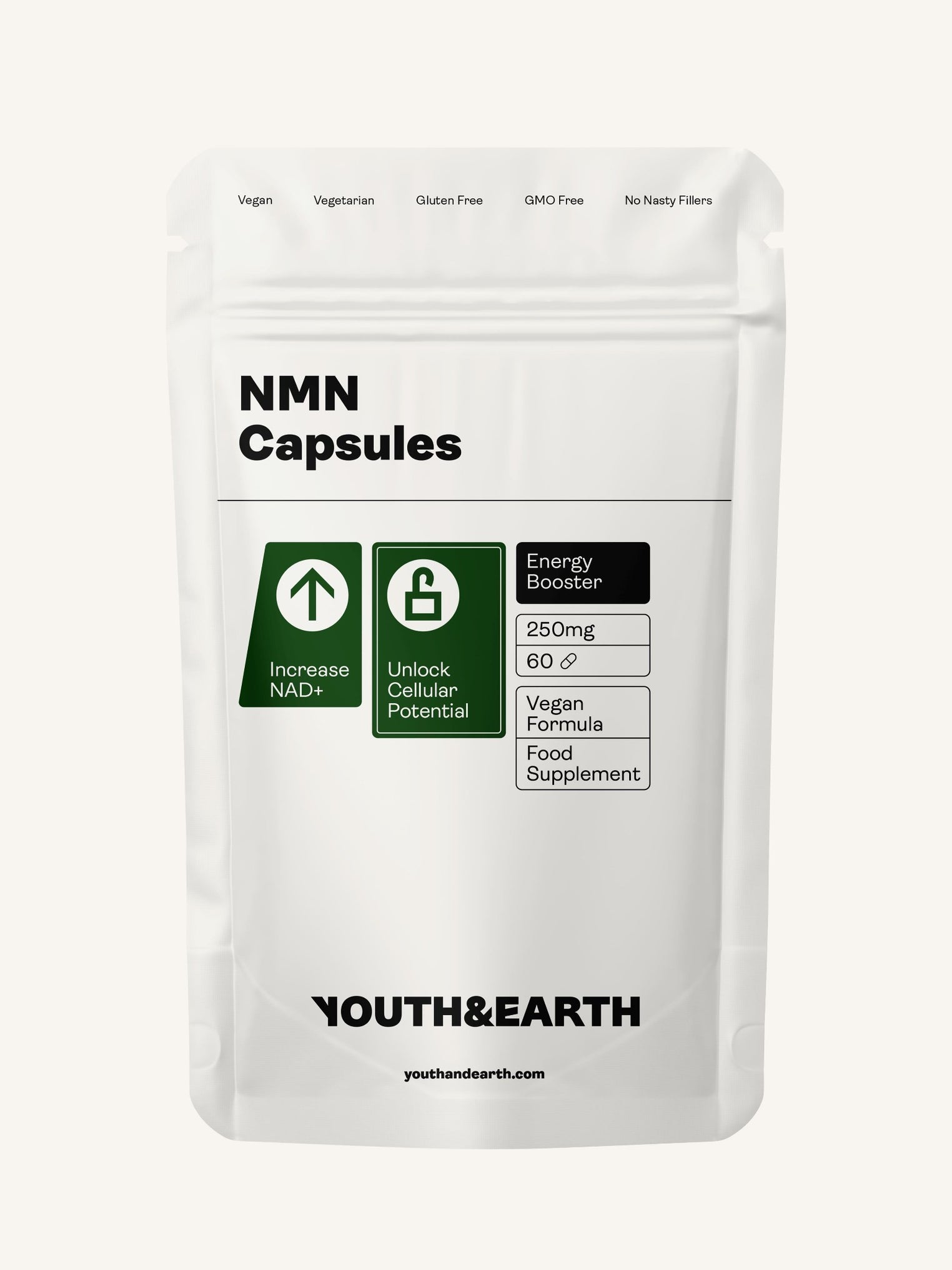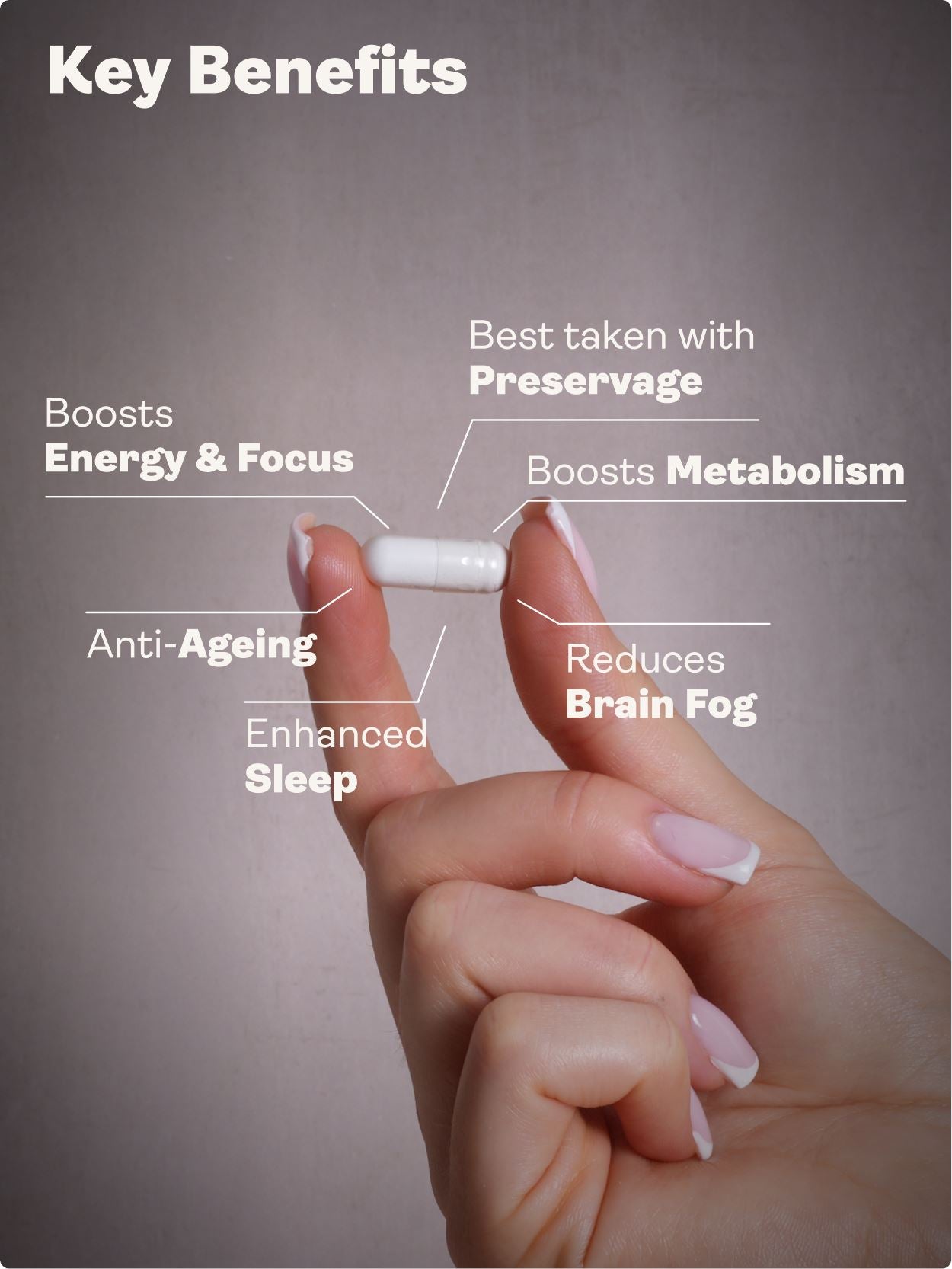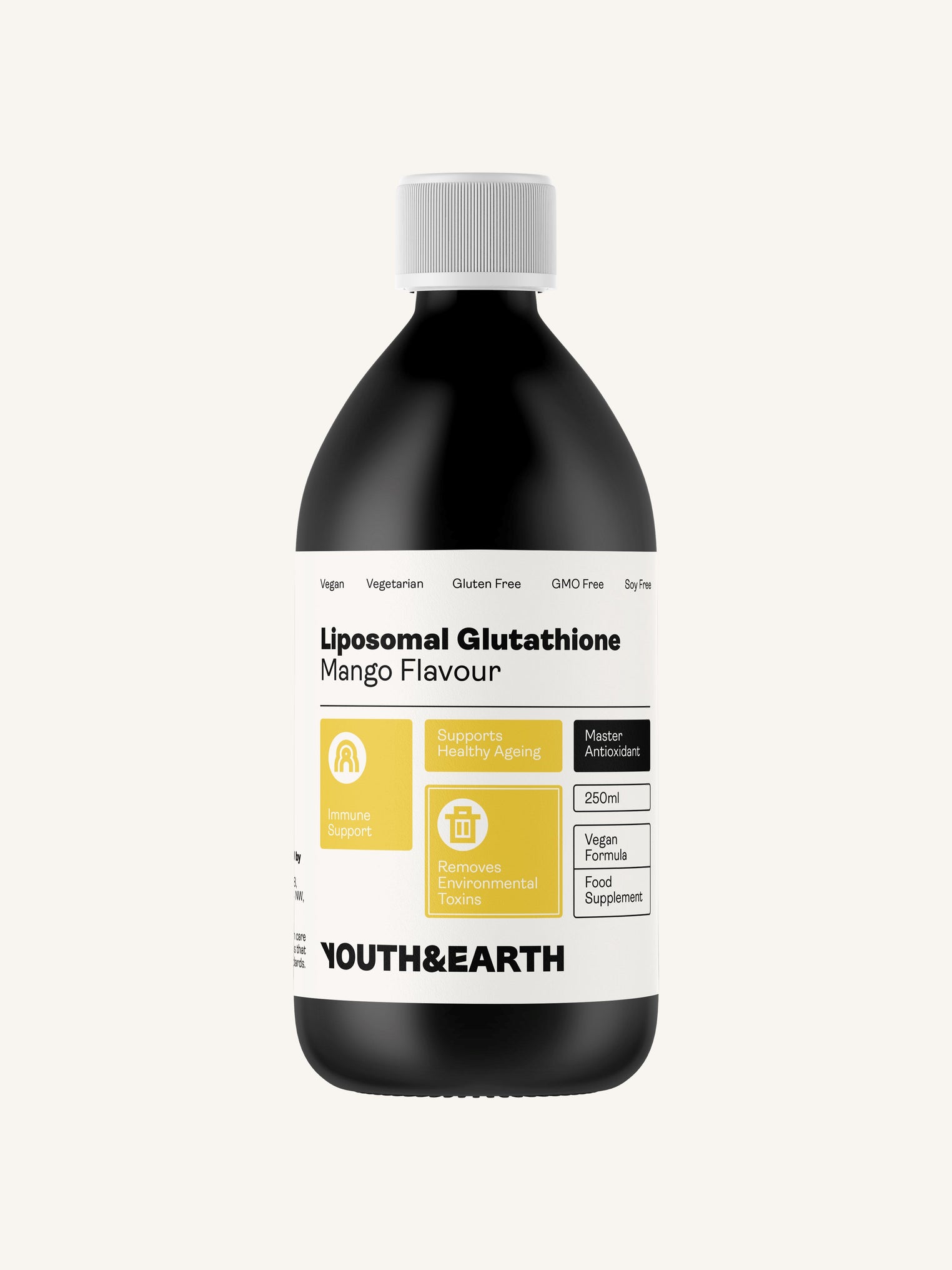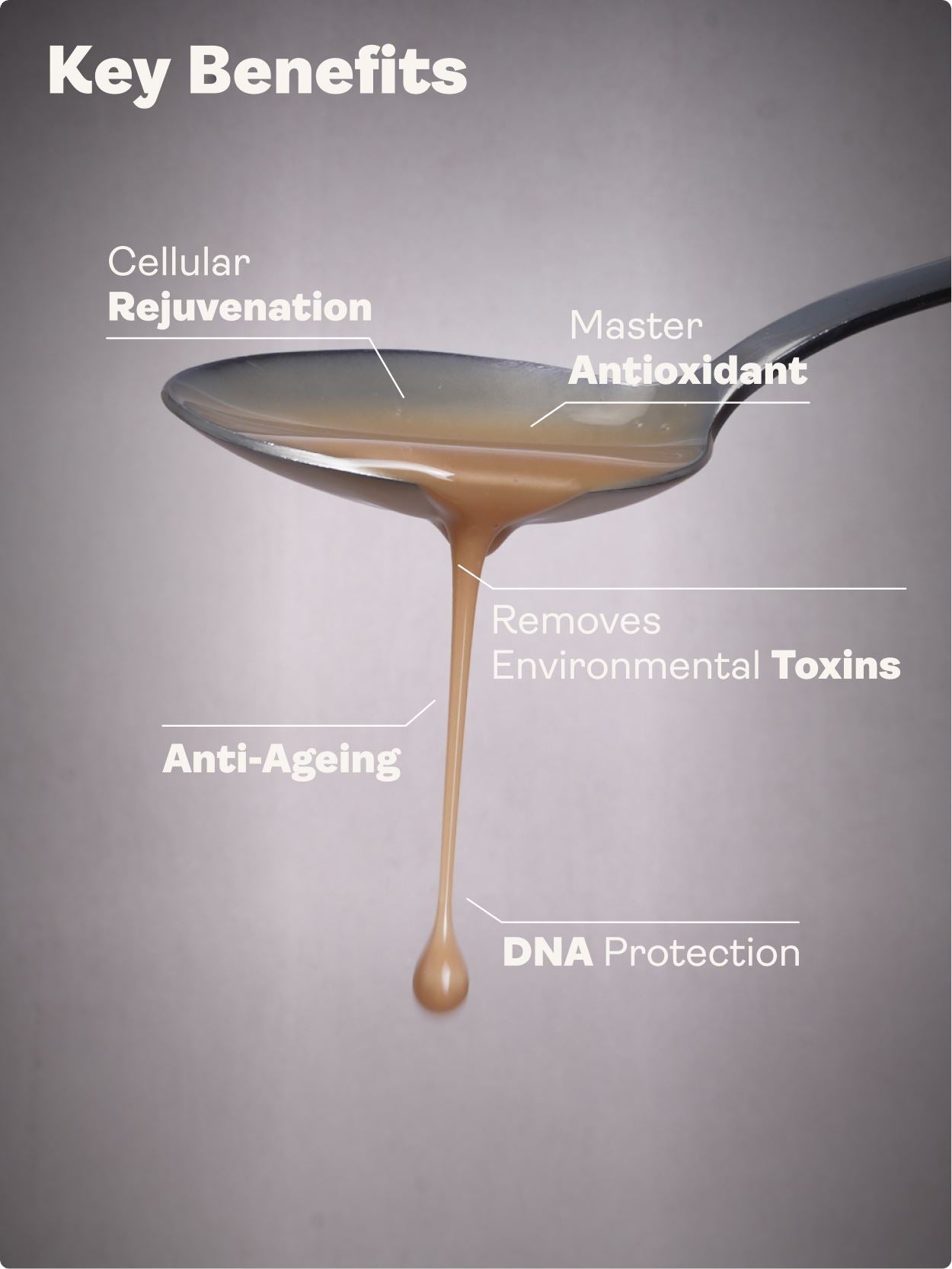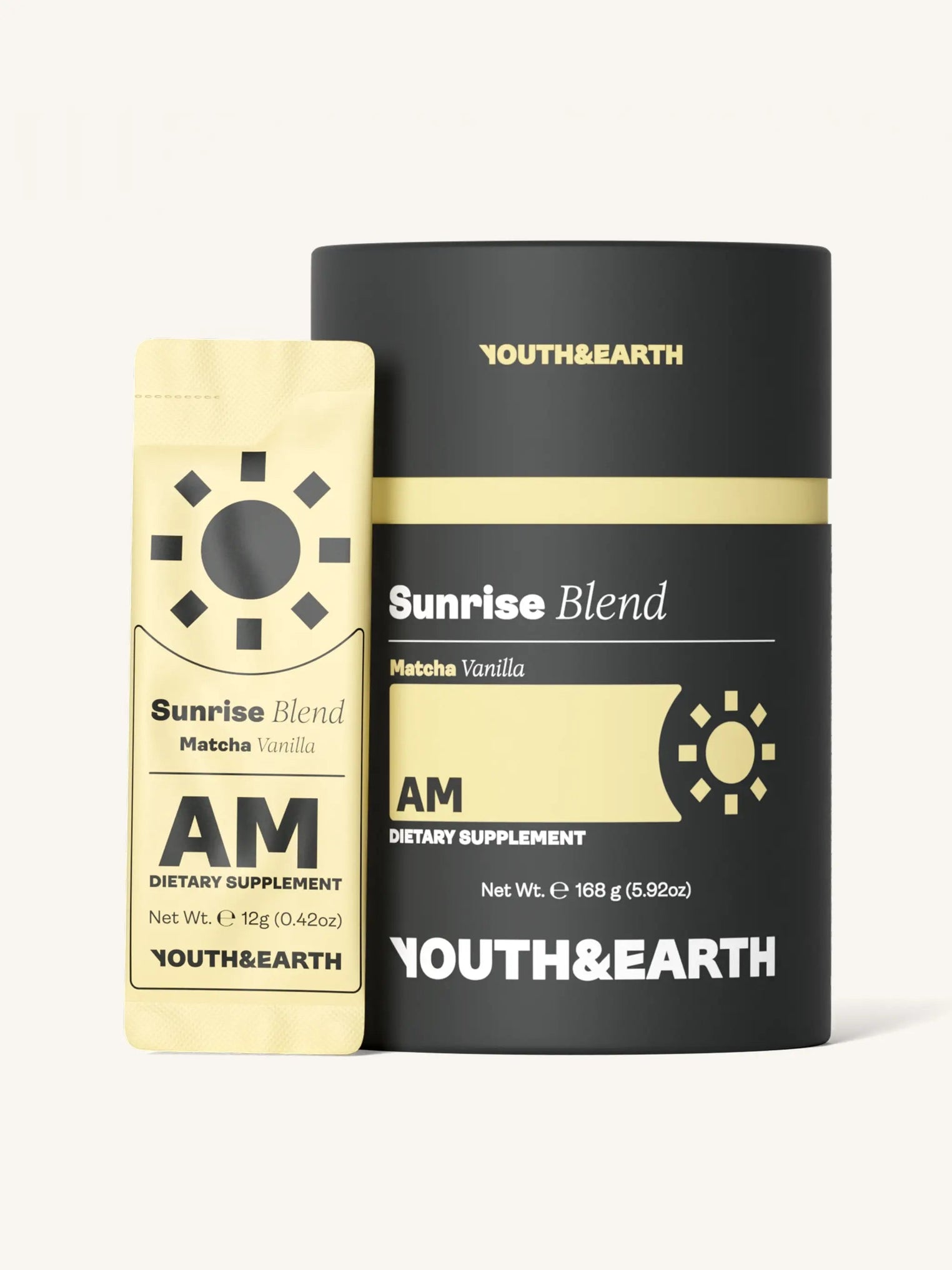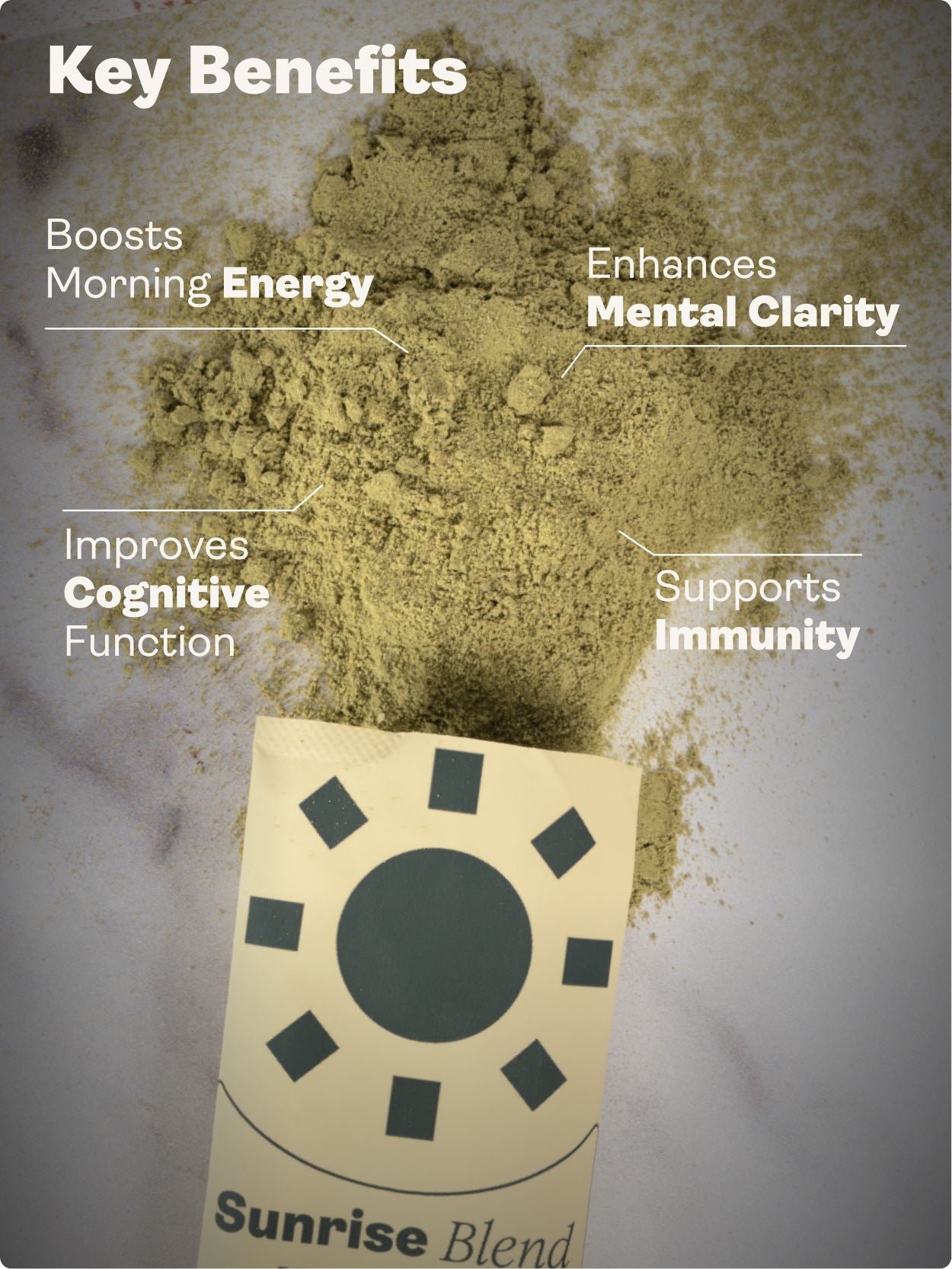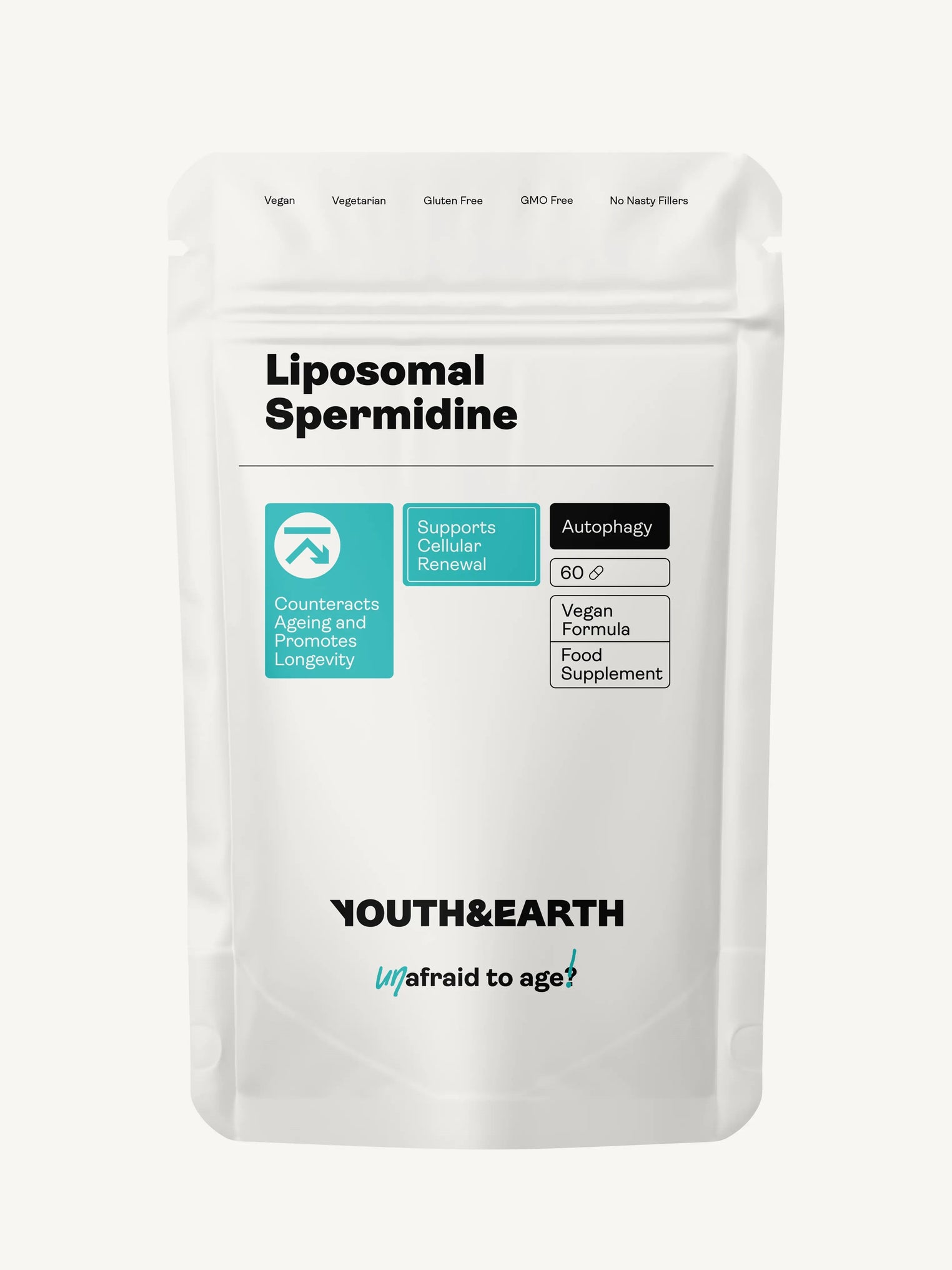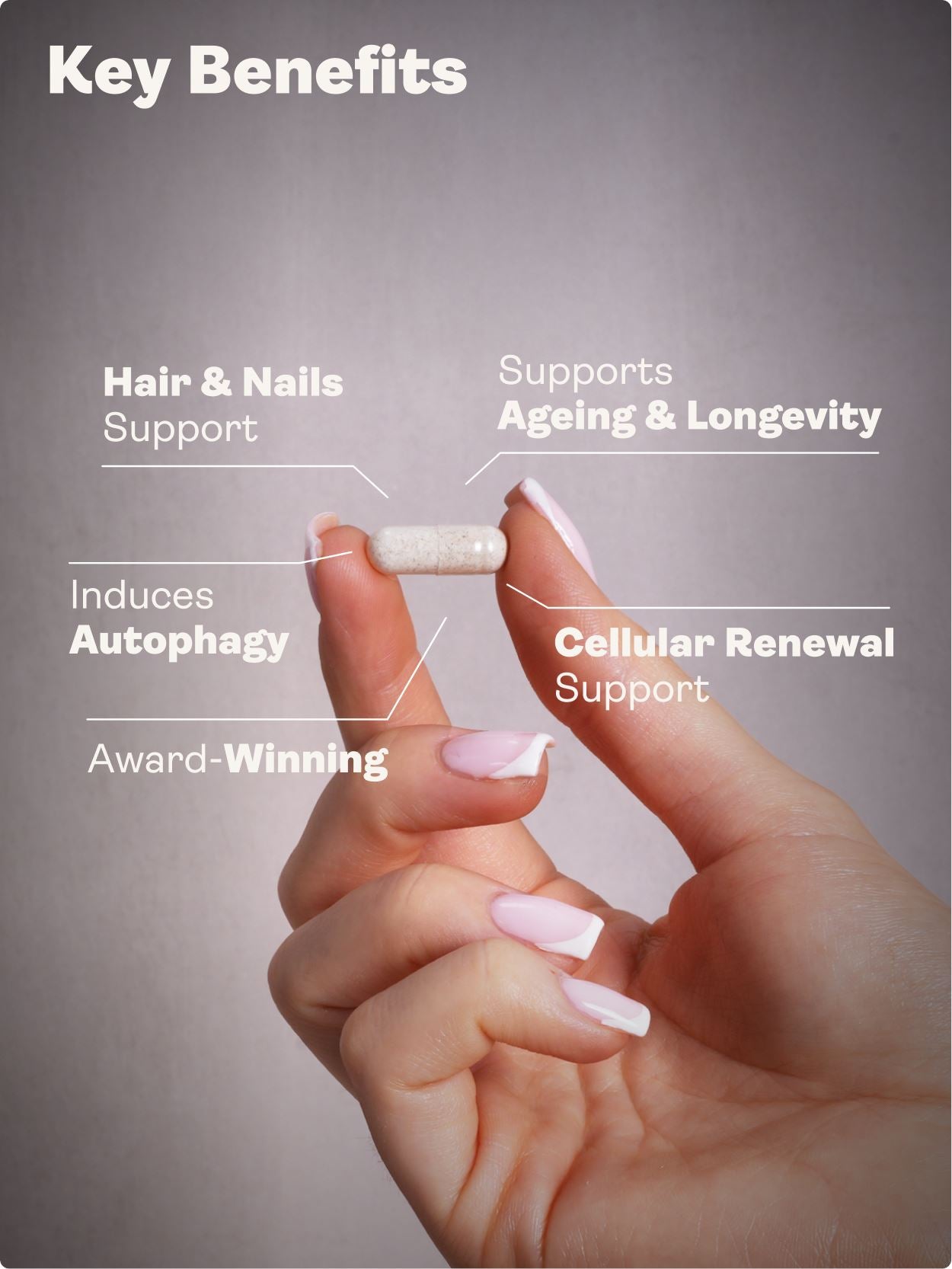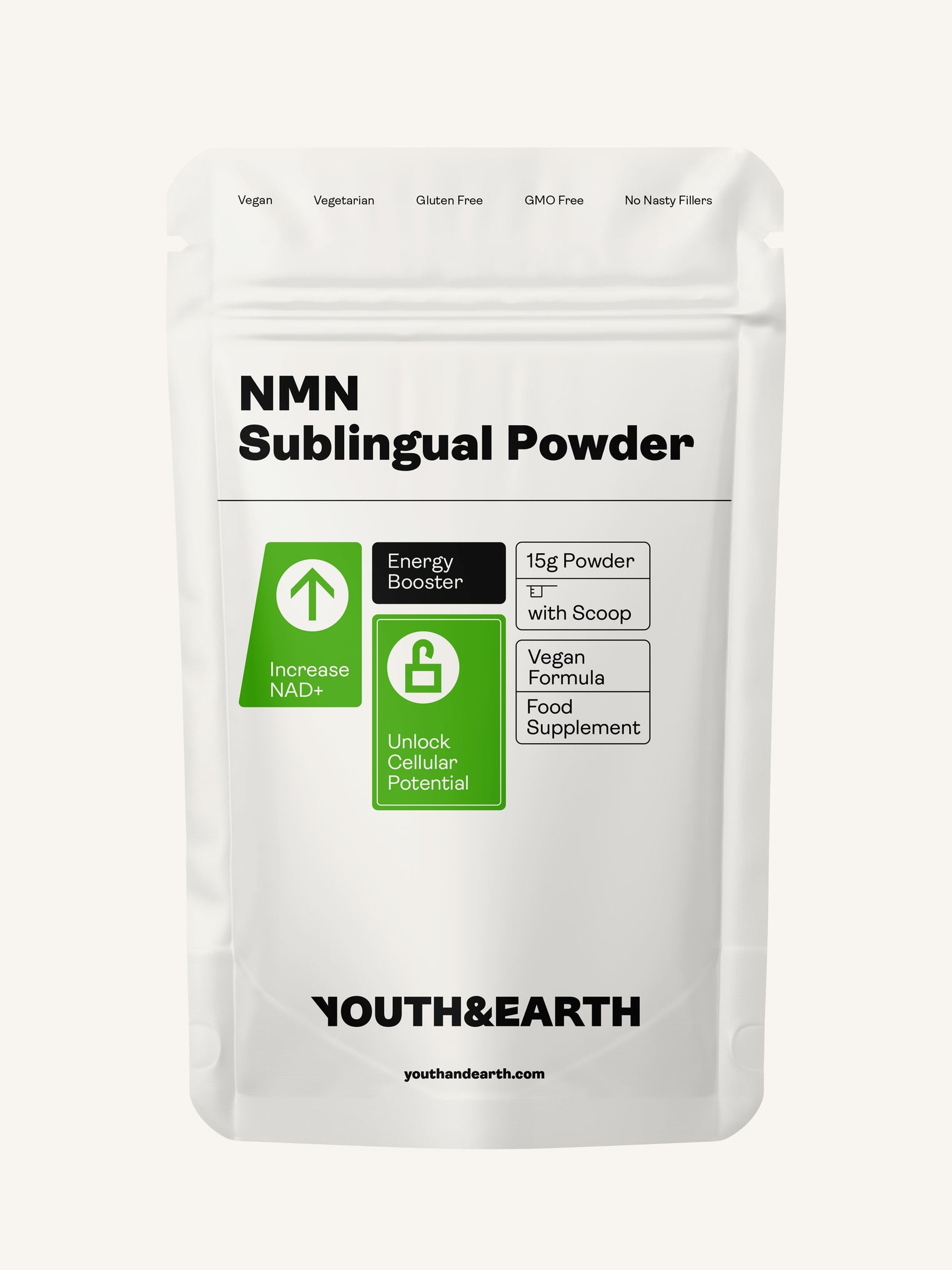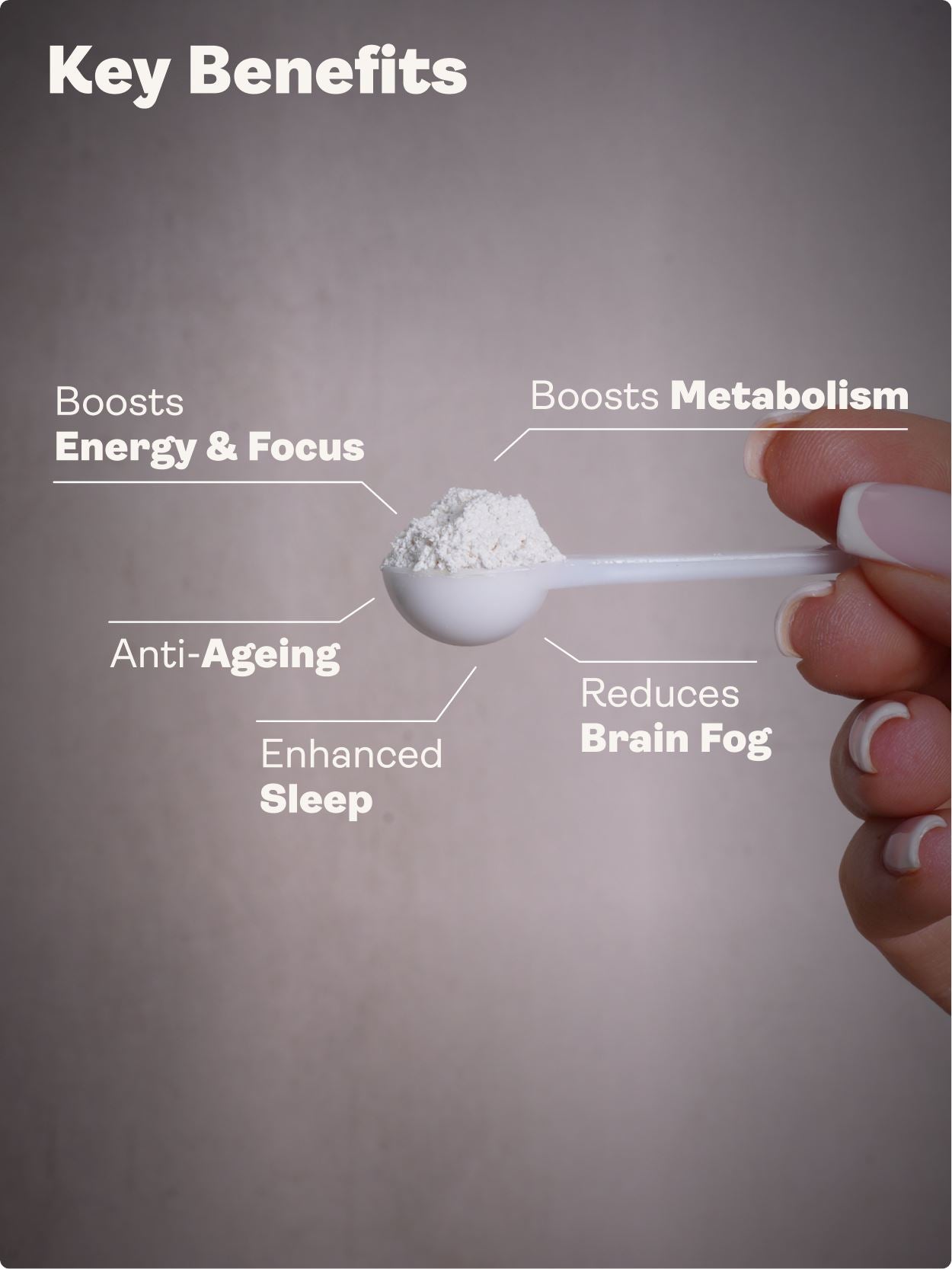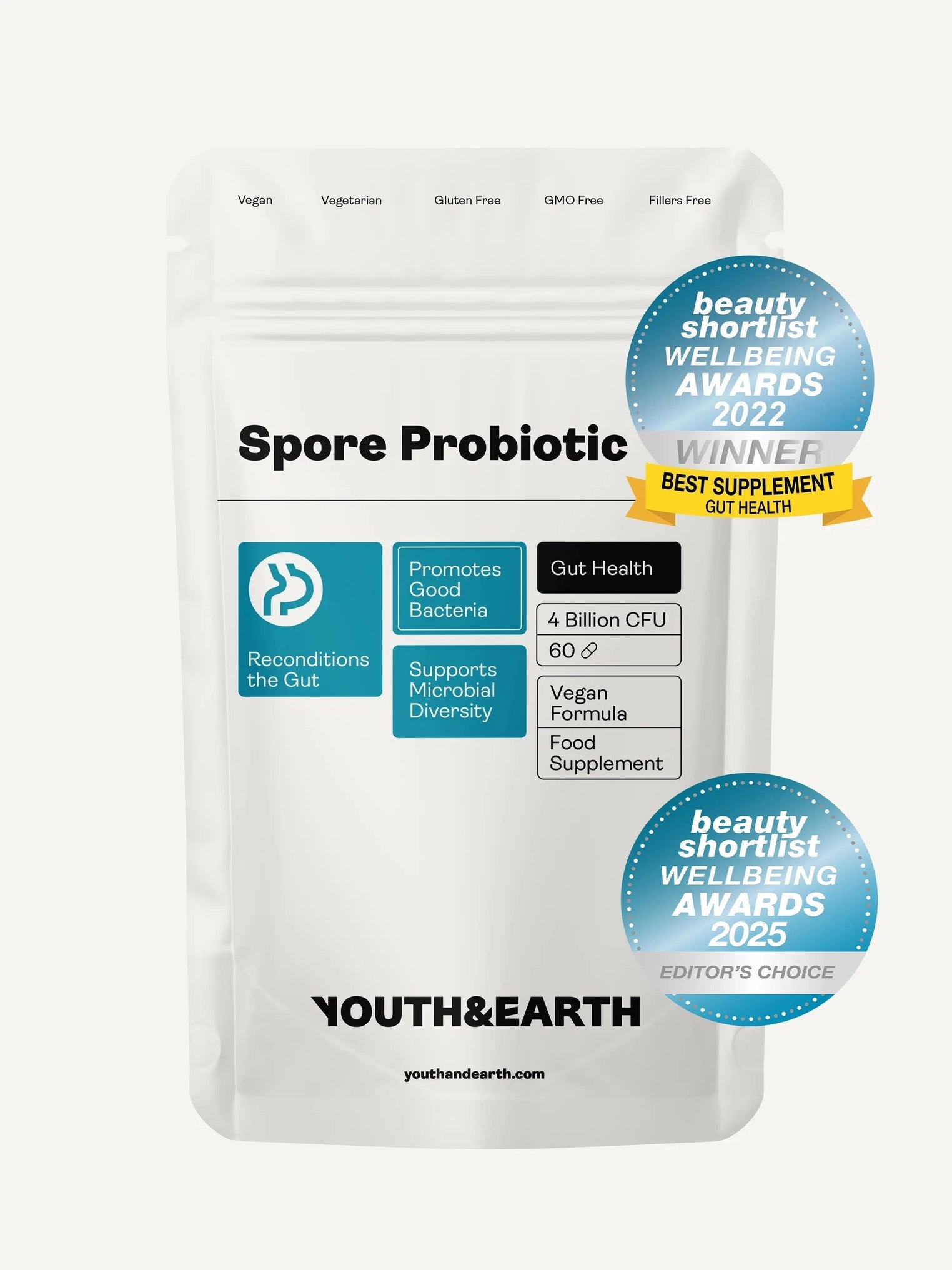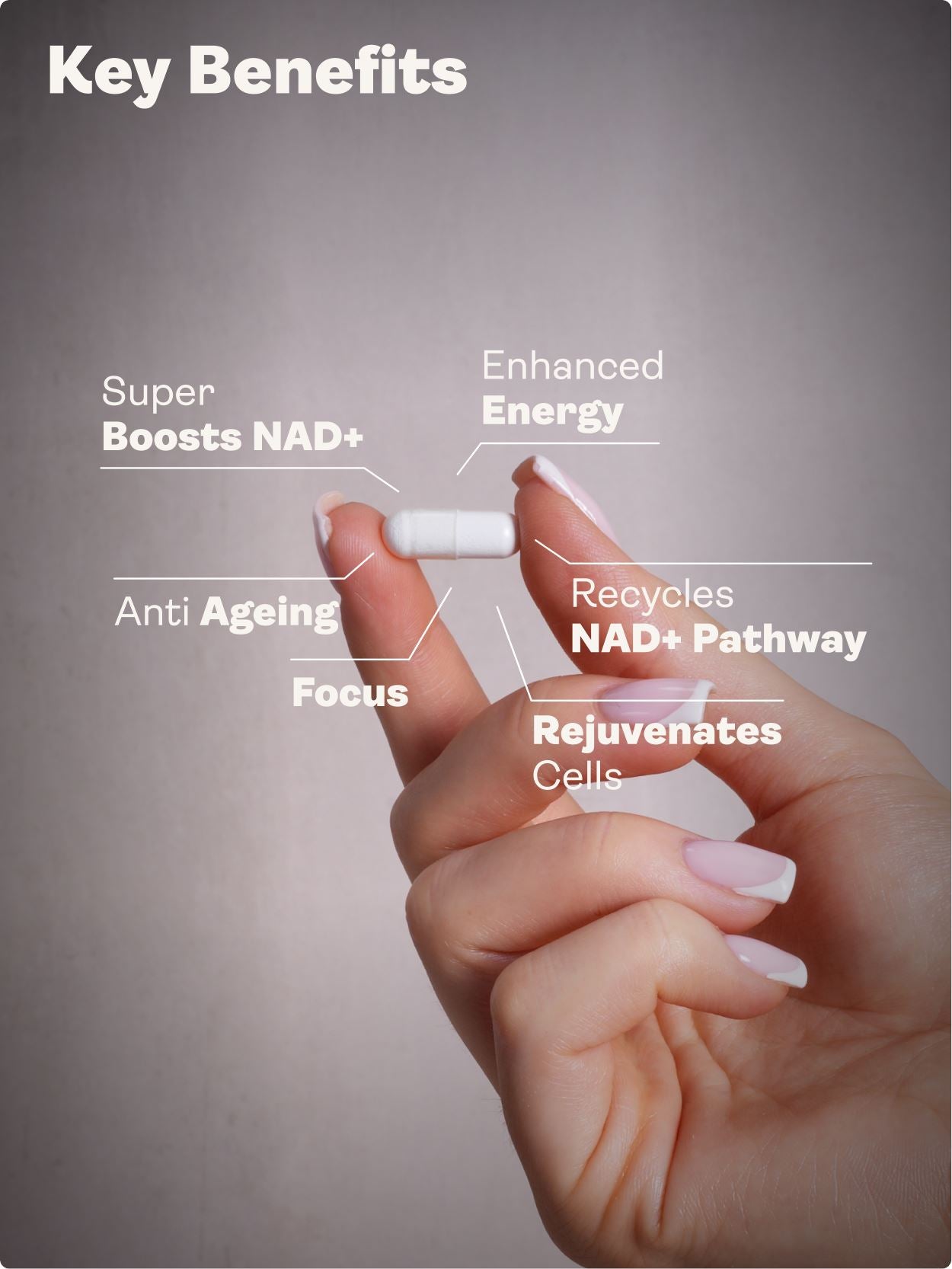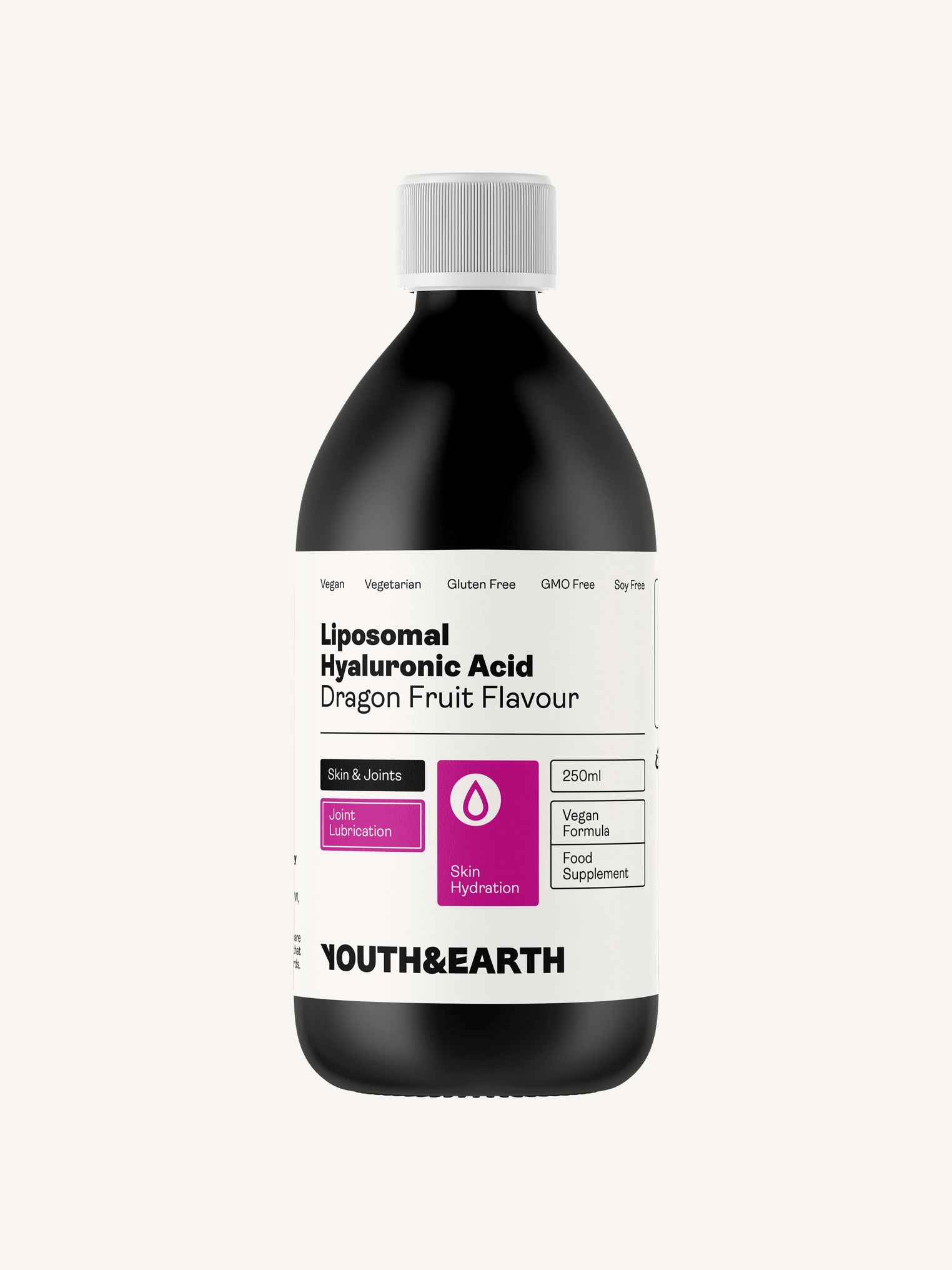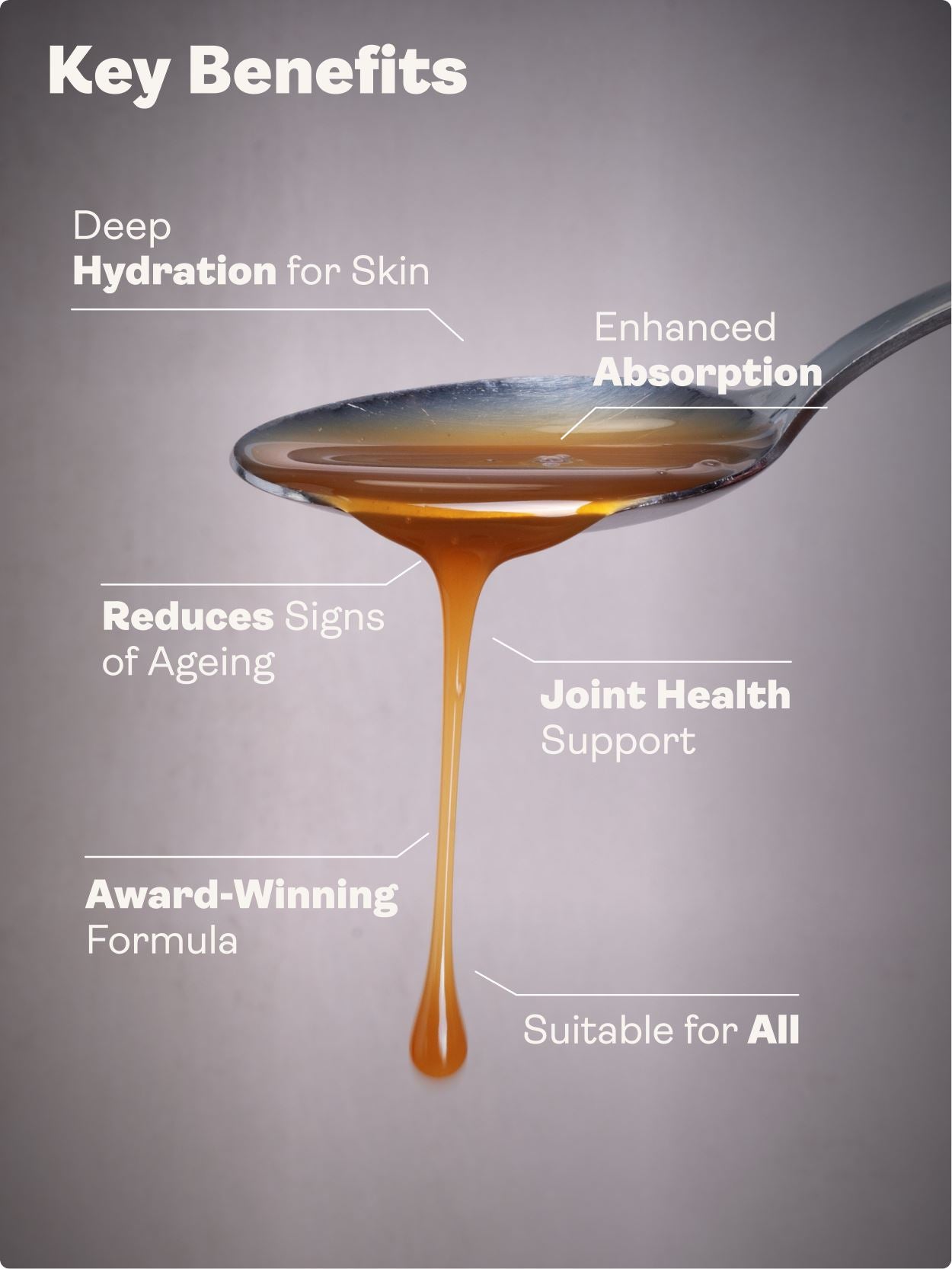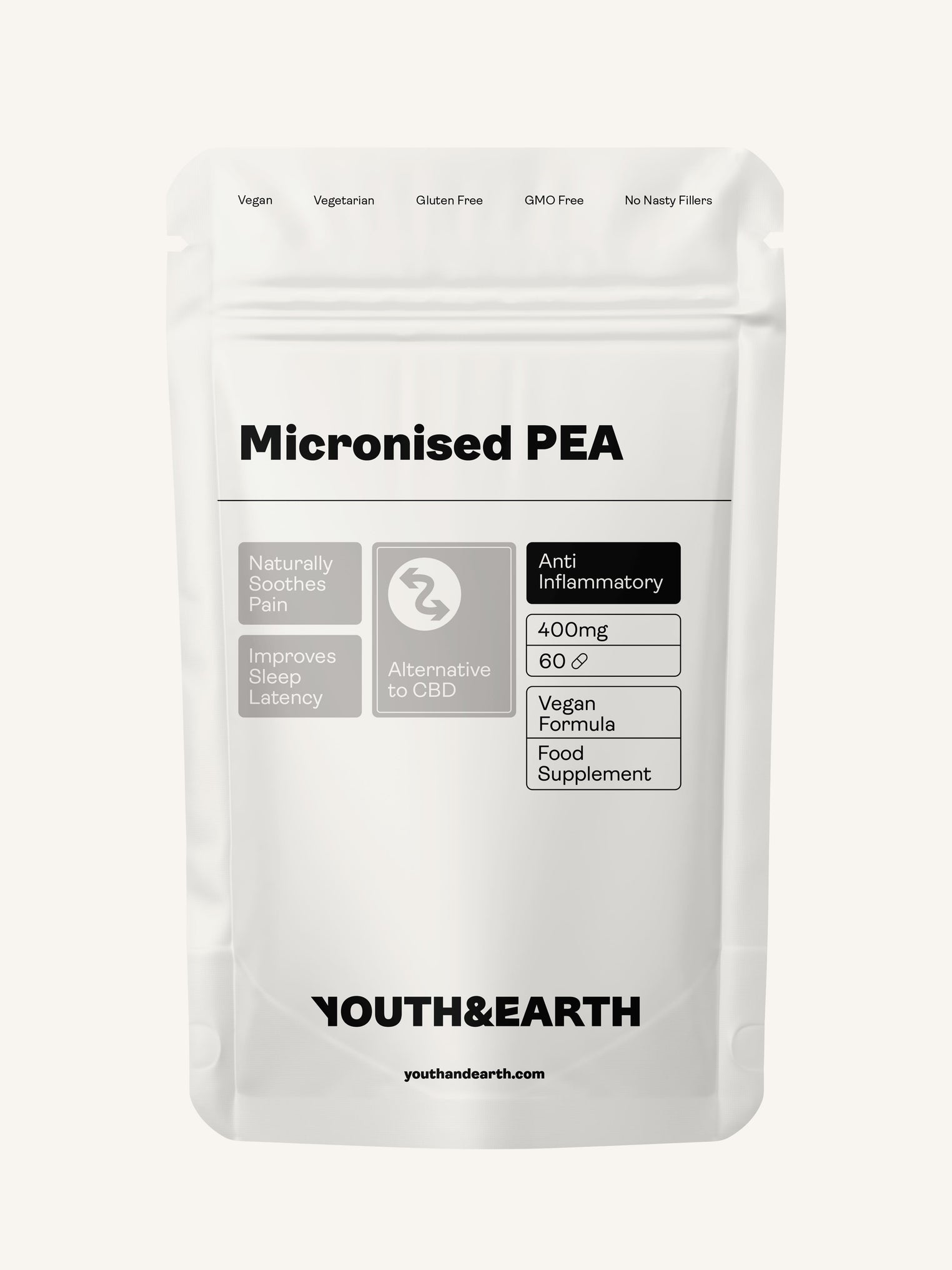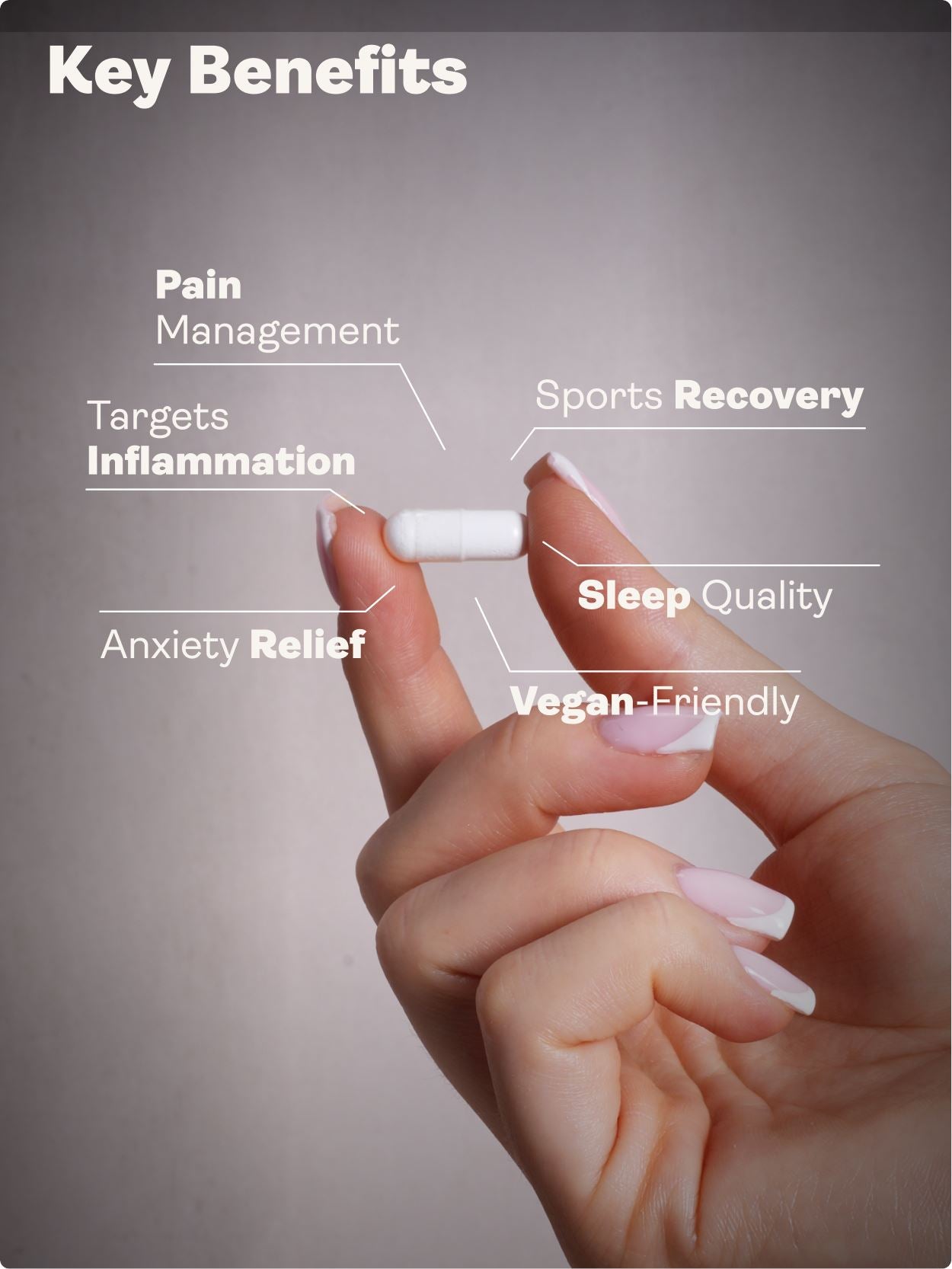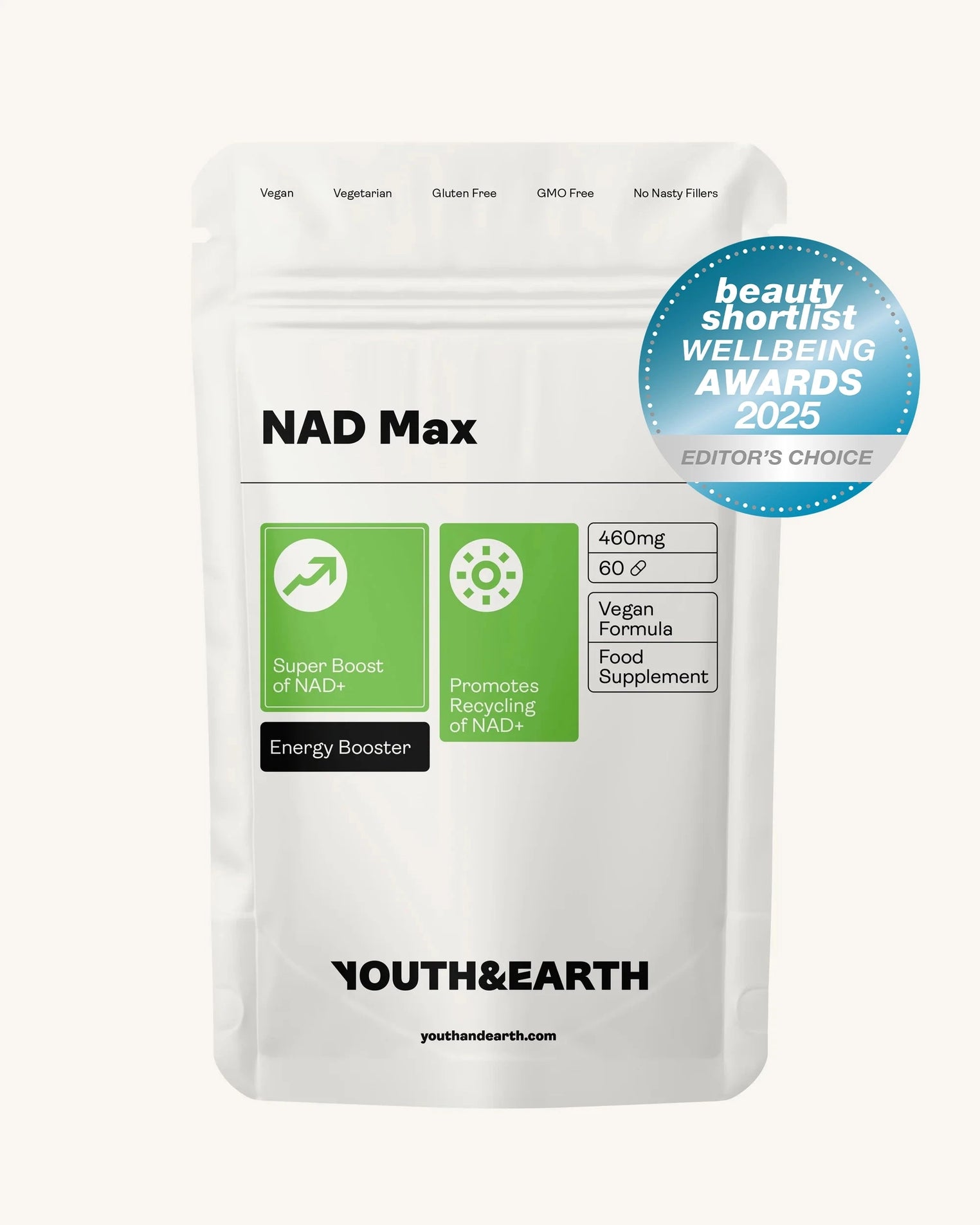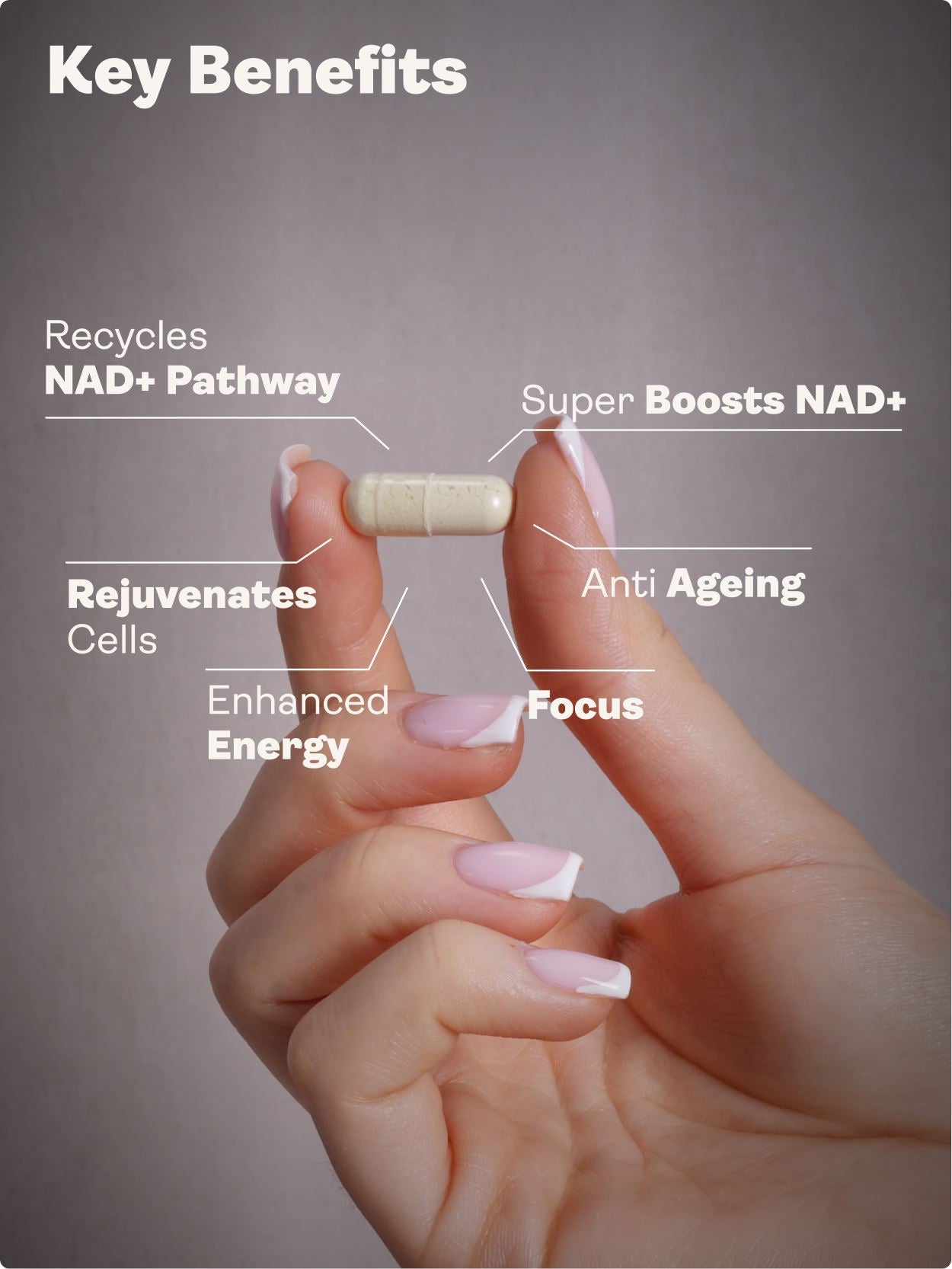The mechanistic target of rapamycin (mTOR) shapes growth, metabolism, and lifespan biology. Learn how to keep it in balance for muscle, metabolism, and longevity. When should you switch on mTOR for growth—and when should you dial it down for repair?
Can simple routines—training, protein timing, fasting, and polyphenols—keep mTOR in a healthy rhythm?
TL;DR
mTOR is a master regulator that tells cells when to build and when to pause. You want targeted activation (e.g., after resistance training for muscle) and regular periods of restraint (e.g., through fasting patterns, lower-calorie meals, and AMPK activation) to support repair and longevity. Practical levers: strength exercise + protein timing; limit excess calories; cycle carbs; and use targeted support like Releaf (berberine) to activate AMPK and PRESERVAGE (resveratrol, curcumin, quercetin) to help moderate pro-growth signalling.
Science Snapshot
- mTOR basics: A protein kinase that coordinates growth and metabolism in response to nutrients, hormones, and mechanical signals.
- Two complexes: mTORC1 drives protein synthesis and inhibits autophagy; mTORC2 supports cytoskeleton, insulin signalling, and cell survival.
- Balance matters: Strategic activation (muscle building) vs. restraint (repair, autophagy) supports healthy ageing.
- Levers: Protein, insulin/IGF-1, leucine, mechanical load, calories → activate mTOR. Energy stress, AMPK, polyphenols, and calorie restriction → temper mTOR.
- Biohacking angle: Cycle growth and repair: train + protein → activate; fast/CR + AMPK activators → balance.
What Is mTOR, in Plain English?
mTOR is a cellular decision-maker. When nutrients and signals say “plenty,” it prioritises growth, protein synthesis, and proliferation. When resources are low, it should ease off, allowing repair, recycling (autophagy), and metabolically efficient states that align with healthy ageing.
| Complex | Main Roles | Notes |
|---|---|---|
| mTORC1 | Protein synthesis, lipid synthesis; suppresses autophagy | Sensitive to amino acids (notably leucine), insulin/IGF-1, and energy status |
| mTORC2 | Cytoskeleton organisation; insulin signalling; cell survival | Activated by growth factors; slower to respond than mTORC1 |
Is mTOR “Good” or “Bad”?
Neither. It’s about context and timing. You want mTOR high during muscle building and healing—but not chronically high at rest.
| When mTOR Helps | When mTOR Can Harm |
|---|---|
| Post-exercise muscle repair and growth; strength and function | Chronic activation at rest may suppress autophagy and elevate growth signals linked to disease |
| Wound healing; immune responses (context-dependent) | Overfeeding (excess calories/protein/carbs) → insulin resistance, fatty liver, adiposity |
What Activates mTOR (and When It Helps)
These inputs raise mTOR signalling. Use them strategically, especially around training, to support performance and healthy ageing.
| Stimulus | Effect on mTOR | Practical Use |
|---|---|---|
| Resistance training / mechanical load | Strong activation in muscle | Lift 2–4×/week for hypertrophy/strength |
| Leucine-rich protein | Activates mTORC1 | 20–40 g high-quality protein post-workout (as appropriate) |
| Insulin / IGF-1 | Growth signalling | Carb + protein around training if aligned with goals |
| Caloric surplus | Sustained activation | Use carefully; avoid chronic surplus at rest |
When mTOR Is Overactive: Conditions & Risks
Persistent, untargeted activation is associated with multiple conditions. Genetics, environment, and lifestyle all modify risk.
| Condition (selected) | mTOR Link (High-Level) | Notes |
|---|---|---|
| Certain cancers | Pro-growth/angiogenesis signalling | mTOR inhibitors are under study/clinical use in contexts |
| Metabolic disease | Insulin resistance, fatty liver, adiposity | Excess calories/carbs/protein at rest elevate risk |
| Neurodegeneration & mood | mTOR signalling implicated in memory, mood circuits | Balanced signalling may support cognitive health |
| Autoimmunity (selected) | Pro-inflammatory growth signalling | Research is ongoing on modulation approaches |
How to Activate mTOR in a Healthy Way
- Lift weights 2–4×/week: Mechanical tension activates mTOR in muscle; supports strength, function, and healthy ageing.
- Time protein around training: A practical range is 20–40 g high-quality protein post-workout, adjusted to body size and goals.
- Use carbs intelligently: Place a portion near training if it supports performance/recovery; avoid constant high intake at rest.
- Omega-3 support: Marine omega-3s (e.g., Krill Oil) may aid muscle recovery and repair signalling in conjunction with training.
How to Inhibit or Balance mTOR
Temper growth signals outside of training windows to favour repair, autophagy, and metabolic health.
- Fasting/Calorie Restriction patterns: Periodic energy deficit supports autophagy and reduces chronic mTOR signalling.
- Activate AMPK: Movement, sleep, and targeted support like Releaf (berberine + supportive actives) help shift metabolism toward burning and repair.
- Polyphenol stack: PRESERVAGE combines trans-resveratrol, curcumin, quercetin, and Bioperine to help moderate inflammatory/growth signalling and support sirtuins.
- Manage calories & protein on rest days: Emphasise vegetables, fibre, and healthy fats; keep protein moderate when not training.
| Tool/Nutrient | Primary Action | Notes |
|---|---|---|
| Fasting / CR | Lowers growth signals; supports autophagy | Cycle sustainably; clinician guidance advised |
| Releaf (berberine, PQQ, silymarin) | Activates AMPK; helps inhibit mTOR and support glucose control | Silymarin has been shown to suppress mTOR-related proliferation |
| PRESERVAGE (resveratrol, curcumin, quercetin, Bioperine) | Polyphenols that help modulate inflammatory and growth pathways | Supports sirtuins; complements fasting/CR and movement |
A Simple Weekly Template
- Train days (2–4×/week): Resistance session → 20–40 g protein post-workout; moderate carbs as needed for performance.
- Rest/recovery days: Lower calories/carbs; prioritise vegetables, fibre, and healthy fats; keep protein moderate.
- Daily habits: Walk/move, sleep 7–9 h, hydrate, sunlight.
- Metabolic support: Consider Releaf for AMPK; PRESERVAGE for polyphenol support; omega-3s (e.g., Krill Oil) for recovery.
Conclusion & Longevity Checklist
Healthy ageing isn’t about turning mTOR off—it’s about timing. Activate for muscle and performance; restrain for repair and cellular housekeeping. Small, repeatable habits create the balance.
- Lift weights and time protein to intentionally activate mTOR.
- Use fasting/CR windows to favour autophagy and reduce chronic growth signals.
- Keep rest-day calories/carbs in check; emphasise fibre and plants.
- Support AMPK with Releaf; support sirtuins and signalling with PRESERVAGE.
- Layer in omega-3s (e.g., Krill Oil) and consistent sleep/movement.
FAQs
Should I avoid protein to keep mTOR low?
No. Protein is essential for health and function. The goal is timing, not avoidance: concentrate higher protein near resistance training and keep rest-day intake reasonable.
Do I need rapamycin to manage mTOR?
Not necessarily. Many people use lifestyle levers—exercise, fasting/CR, AMPK activation, and polyphenols—to support balance. Any prescription drug should be discussed with a clinician.
How do AMPK and mTOR interact?
AMPK is an energy sensor that generally pushes cells toward repair and efficiency, often tempering mTOR. Activating AMPK (movement, berberine) can help counter chronic mTOR signalling.
Can omega-3s help with healthy mTOR activation?
Marine omega-3s can support muscle recovery and repair signalling alongside training and may help moderate inflammation that interacts with growth pathways.
What’s a simple first step?
Start lifting 2–3×/week and place your main protein meal after training. Add one lower-calorie, plant-forward rest day each week to favour repair.
Glossary
mTOR: Mechanistic target of rapamycin; a protein kinase that regulates growth and metabolism.
mTORC1 / mTORC2: Two complexes of mTOR with distinct roles; mTORC1 drives protein synthesis and suppresses autophagy; mTORC2 supports insulin signalling and cell survival.
AMPK: AMP-activated protein kinase; cellular energy sensor that favours repair, fat burning, and metabolic balance.
Autophagy: Cellular recycling/clean-up process supporting repair and longevity.
Leucine: An amino acid that strongly activates mTORC1 and protein synthesis in muscle.
Medical Disclaimer
This article is for informational purposes only and is not a substitute for professional medical advice, diagnosis, or treatment. Always consult your physician or qualified health provider before starting any new exercise, fasting protocol, or supplement.


